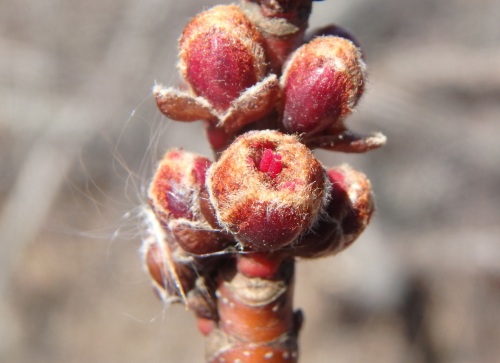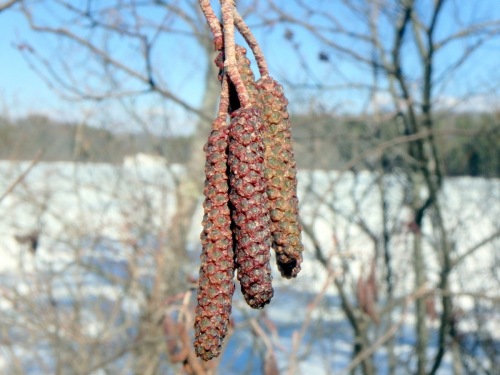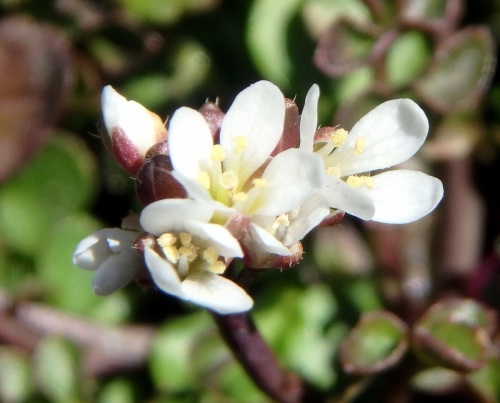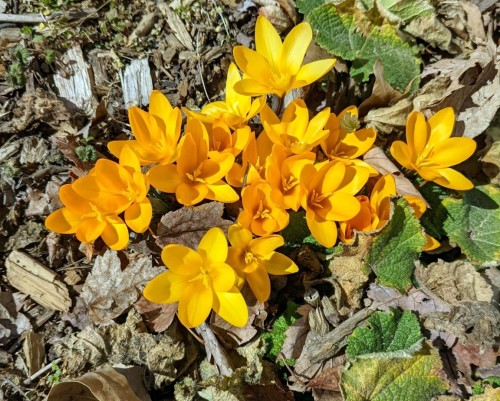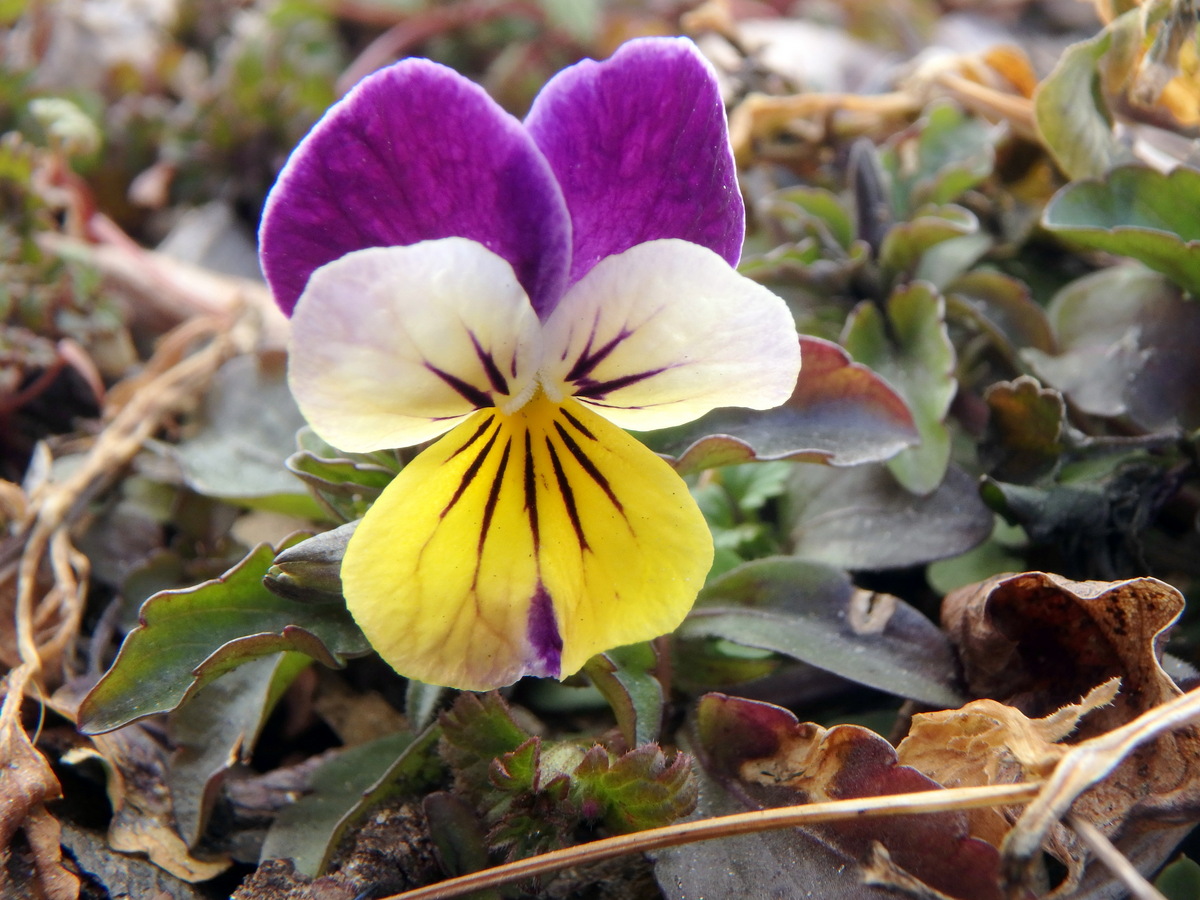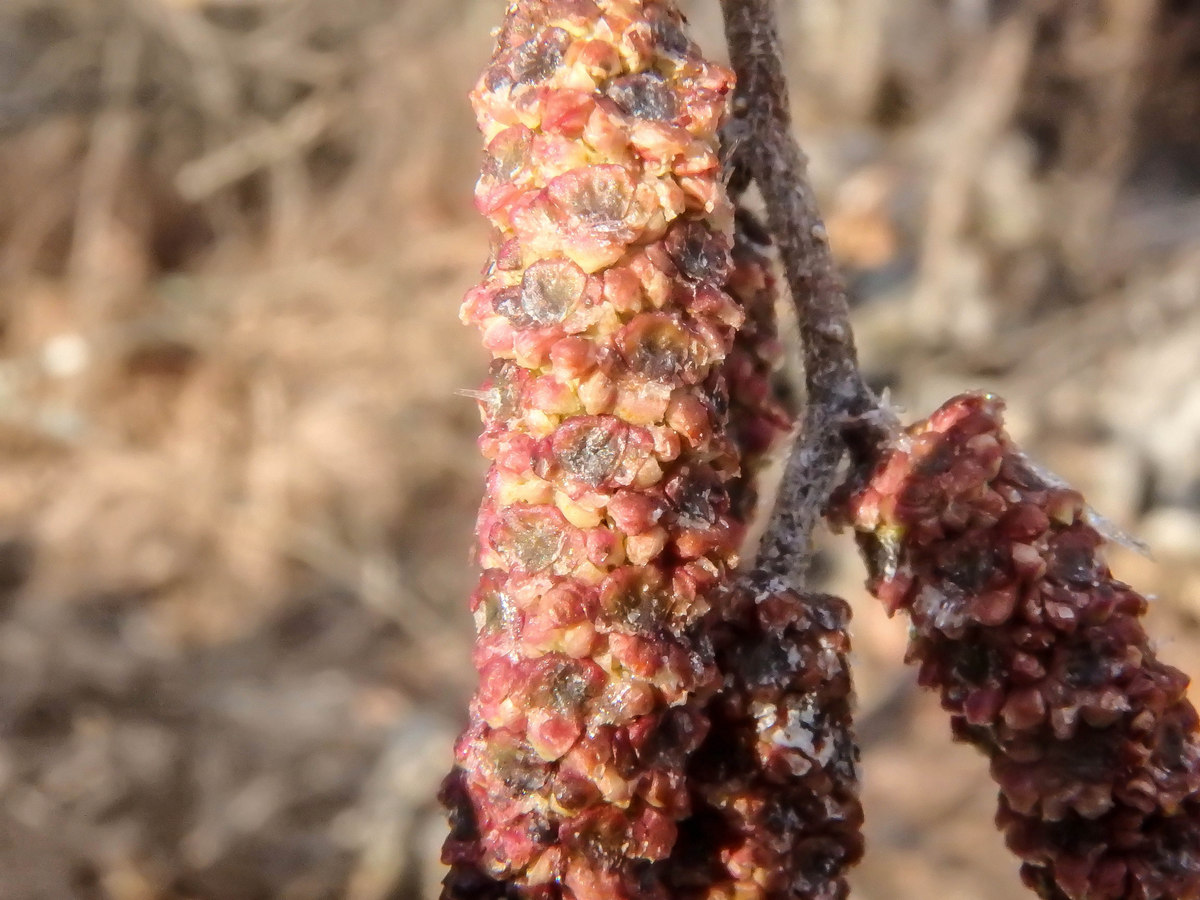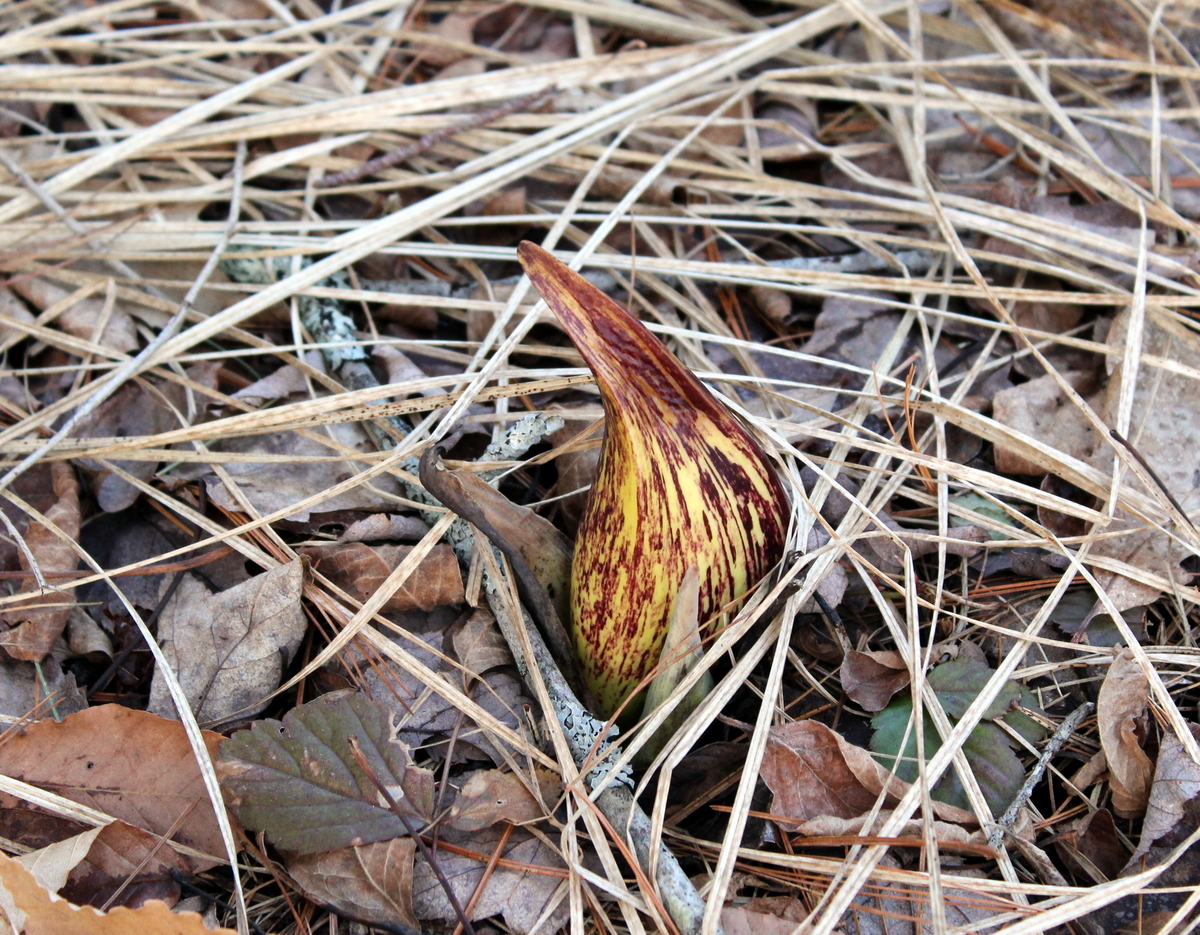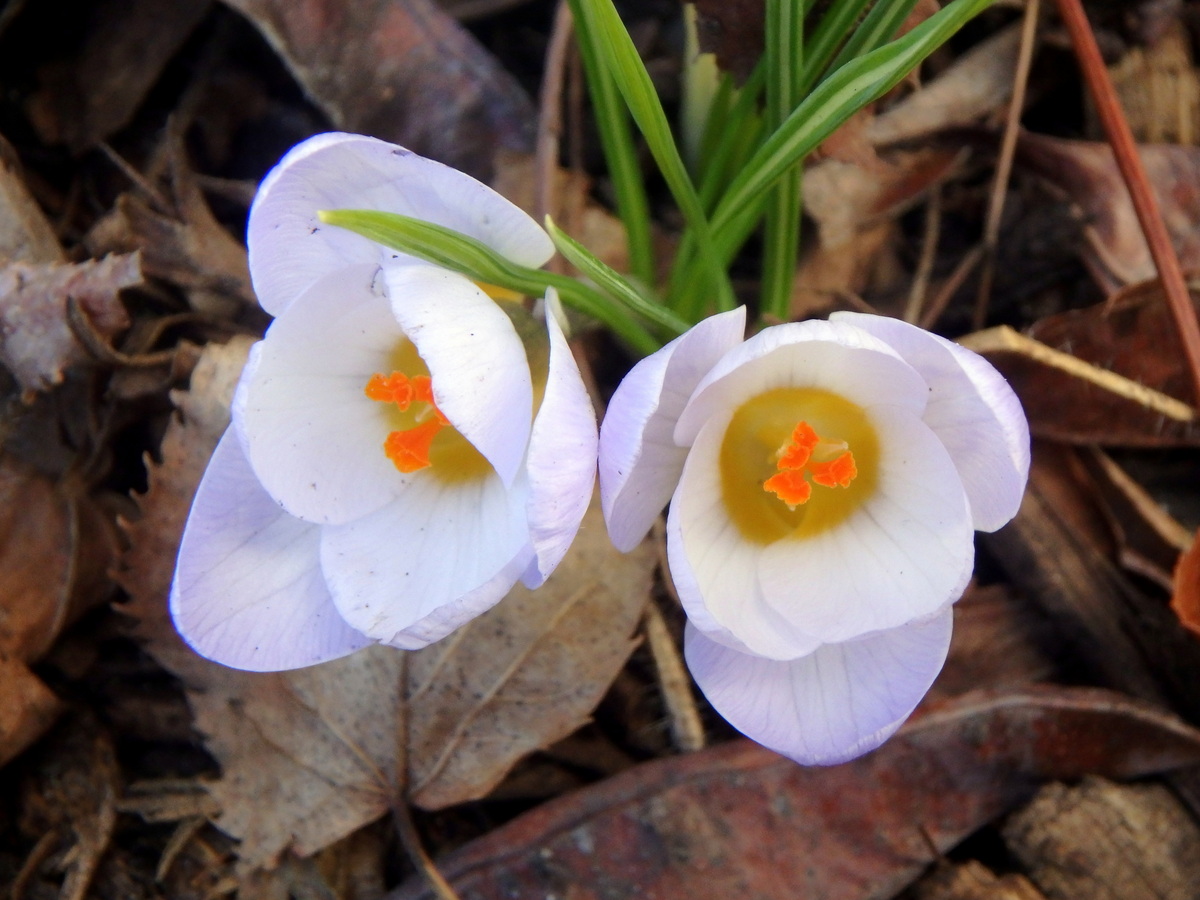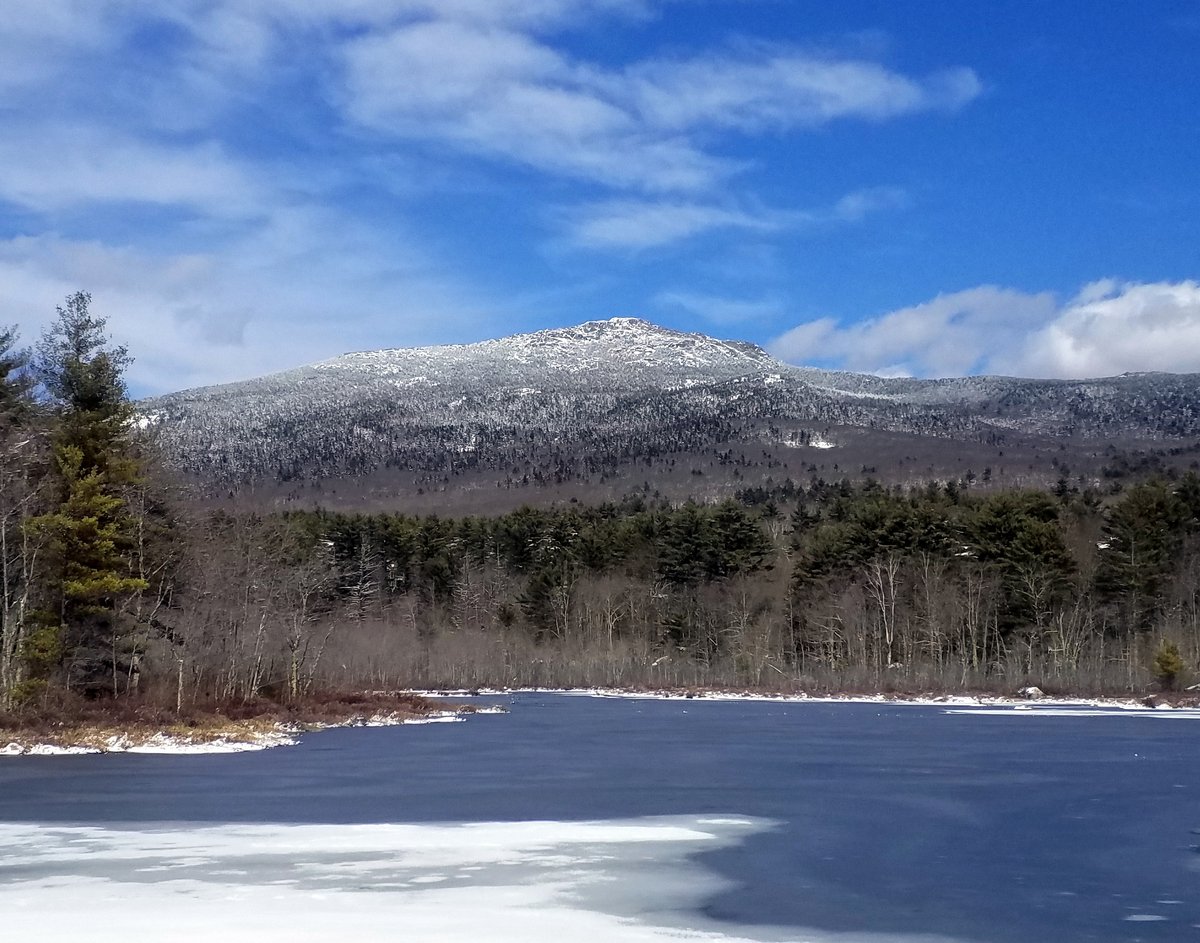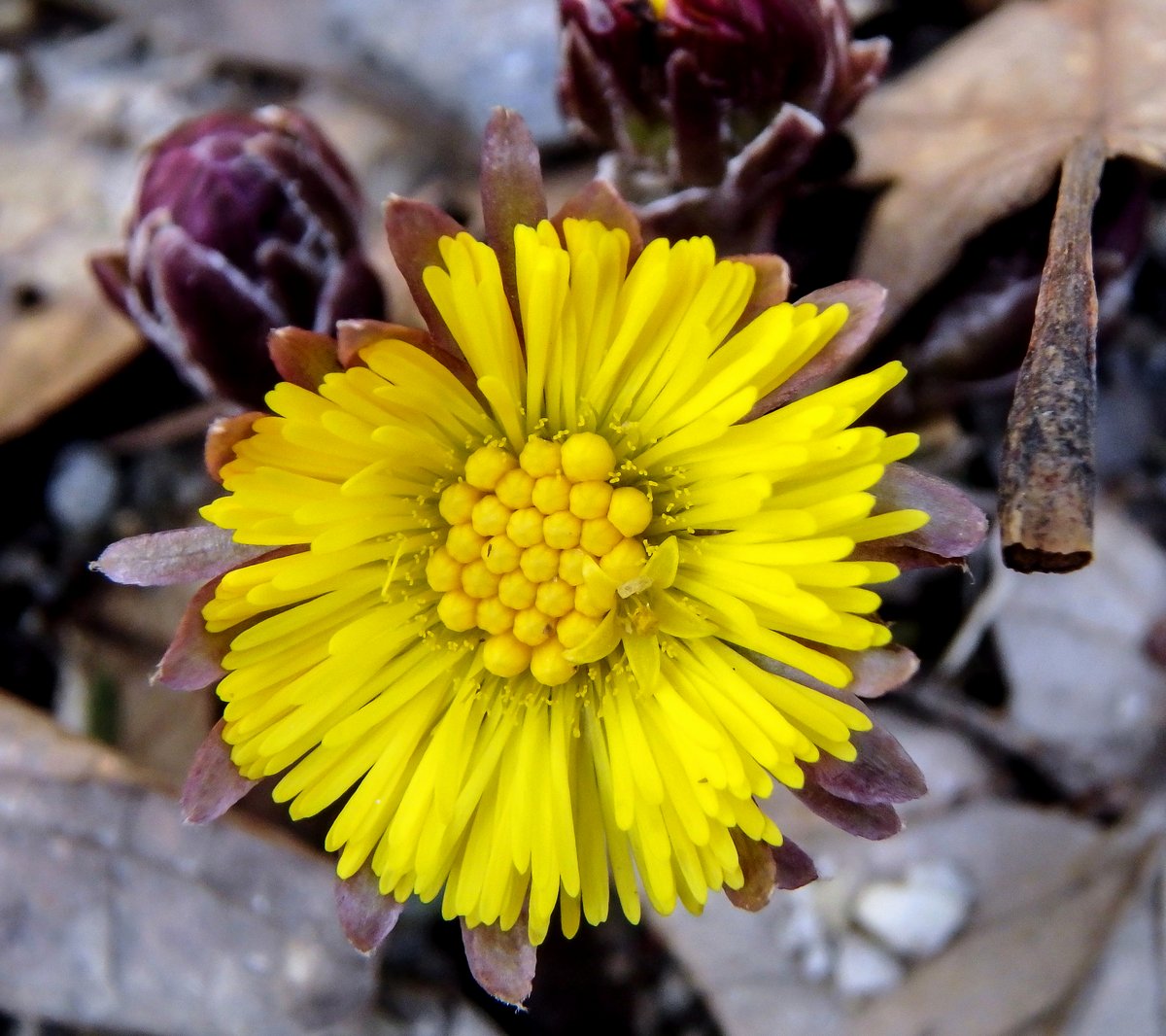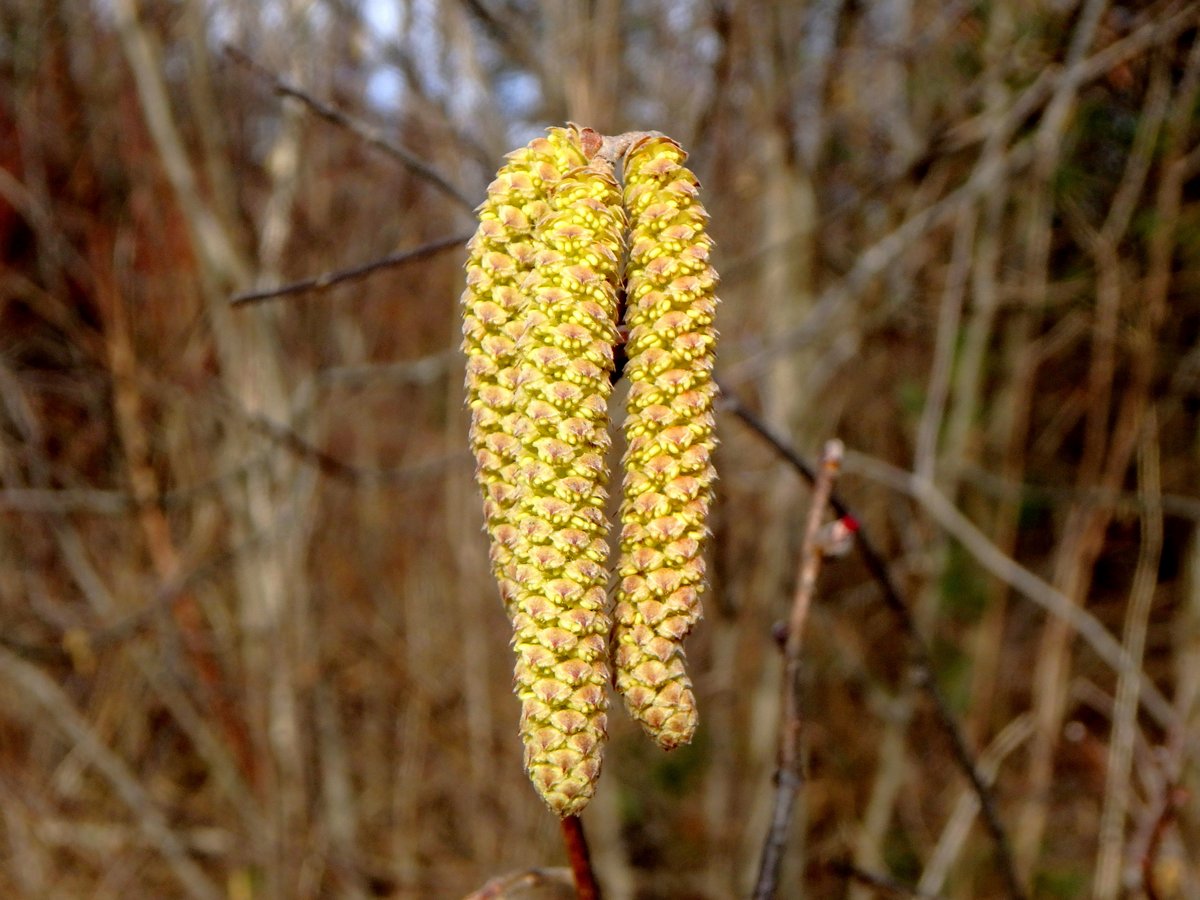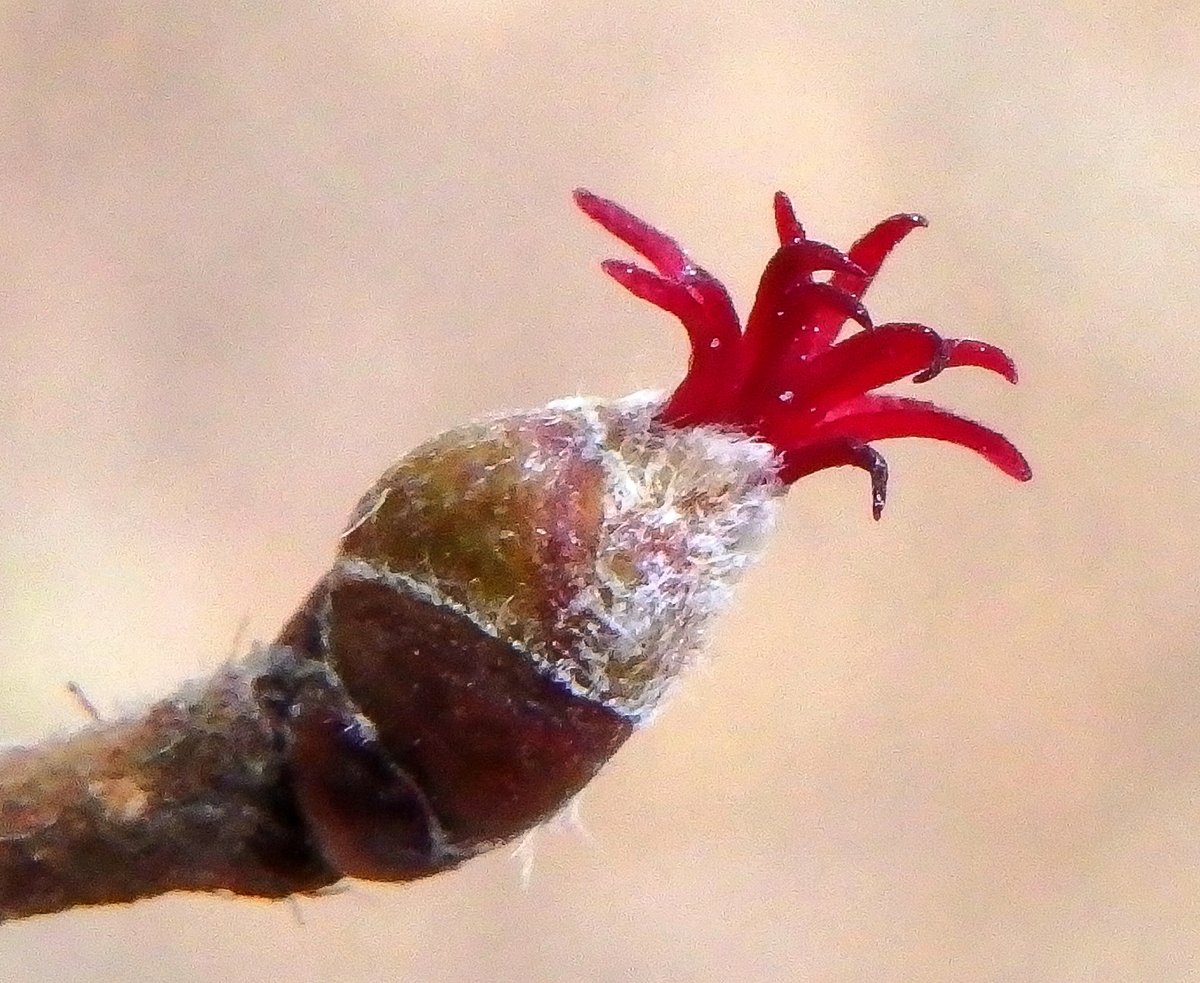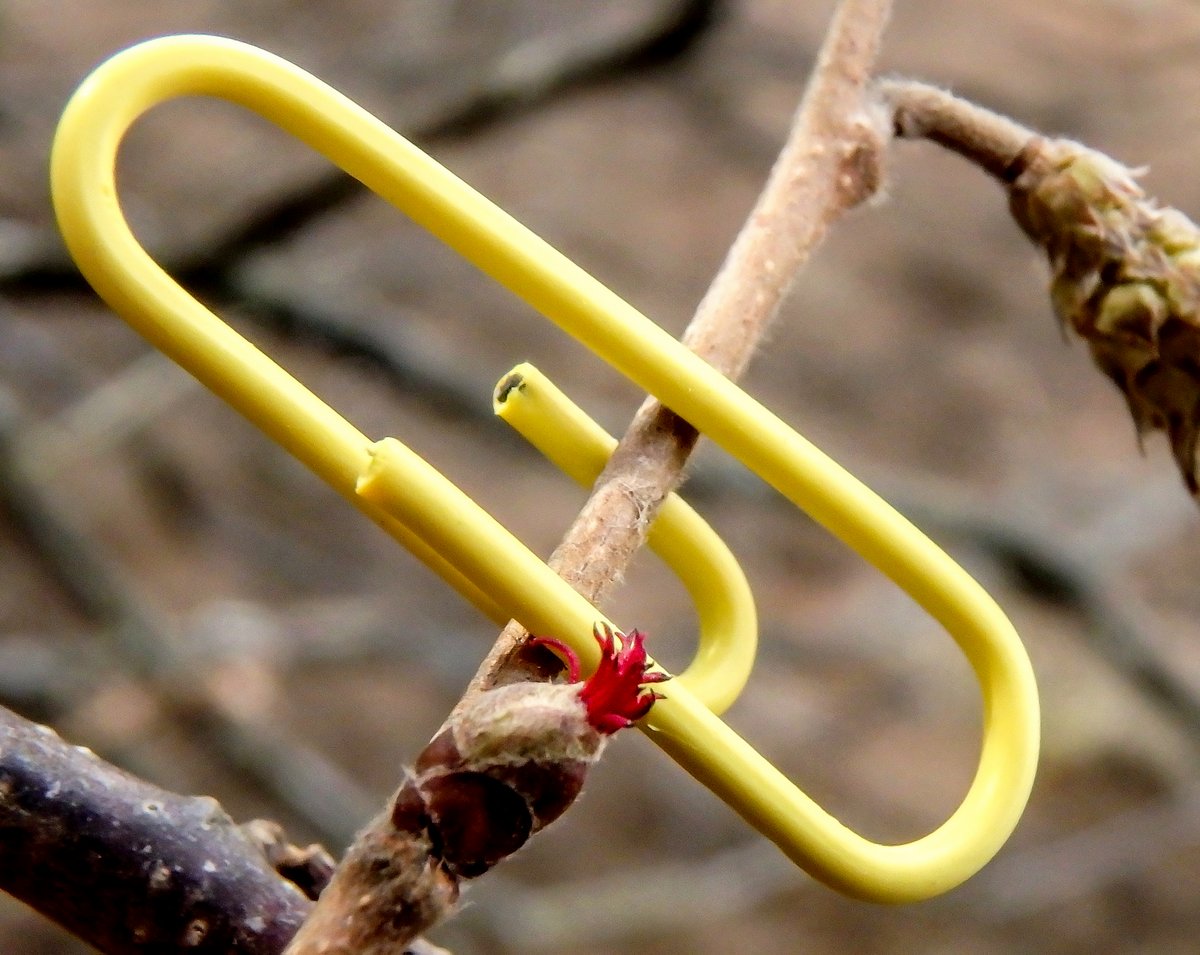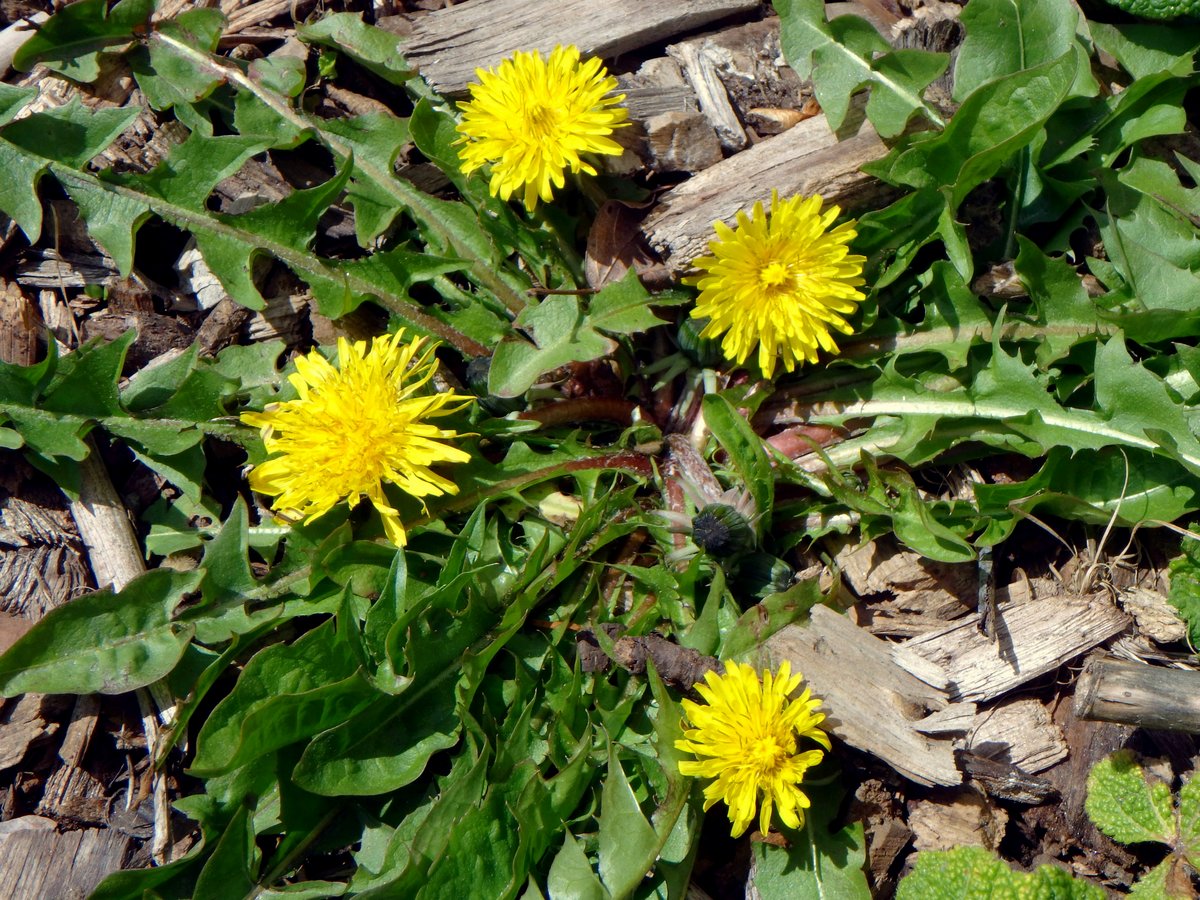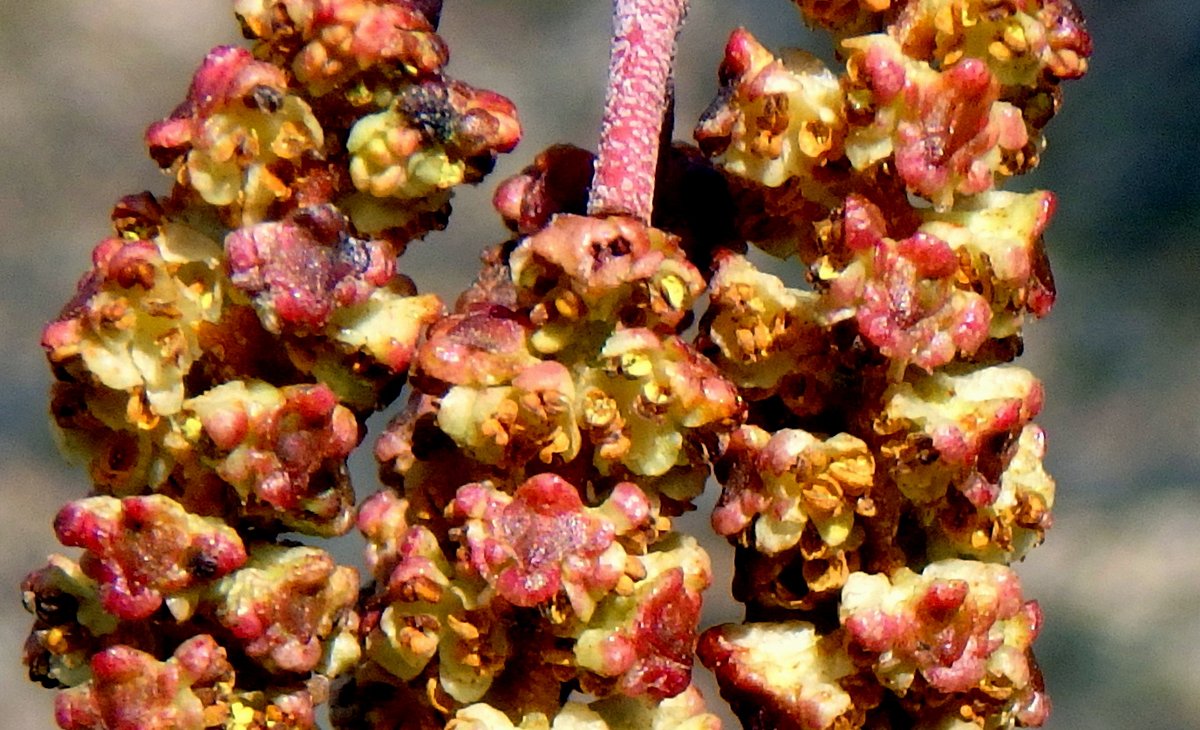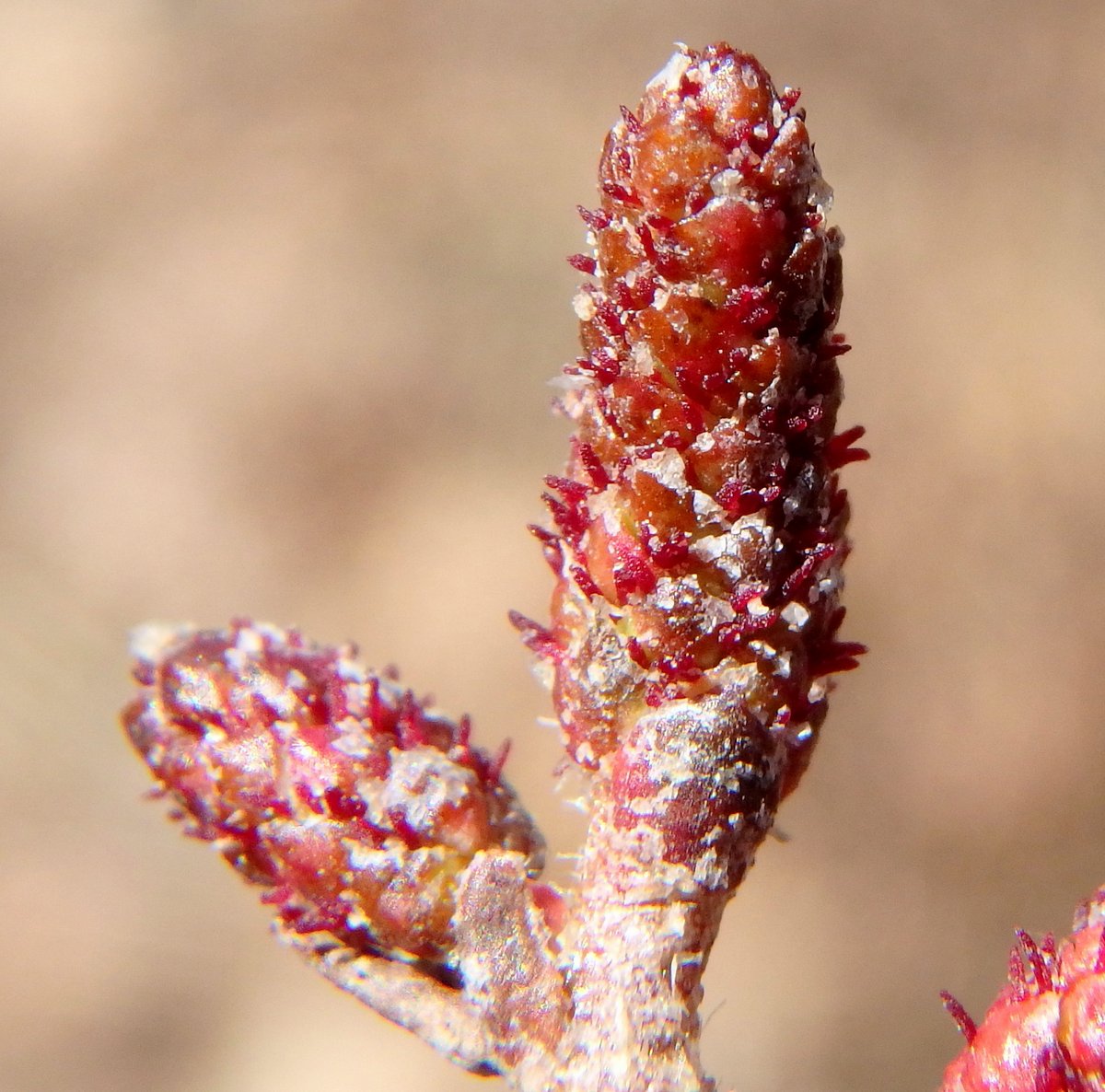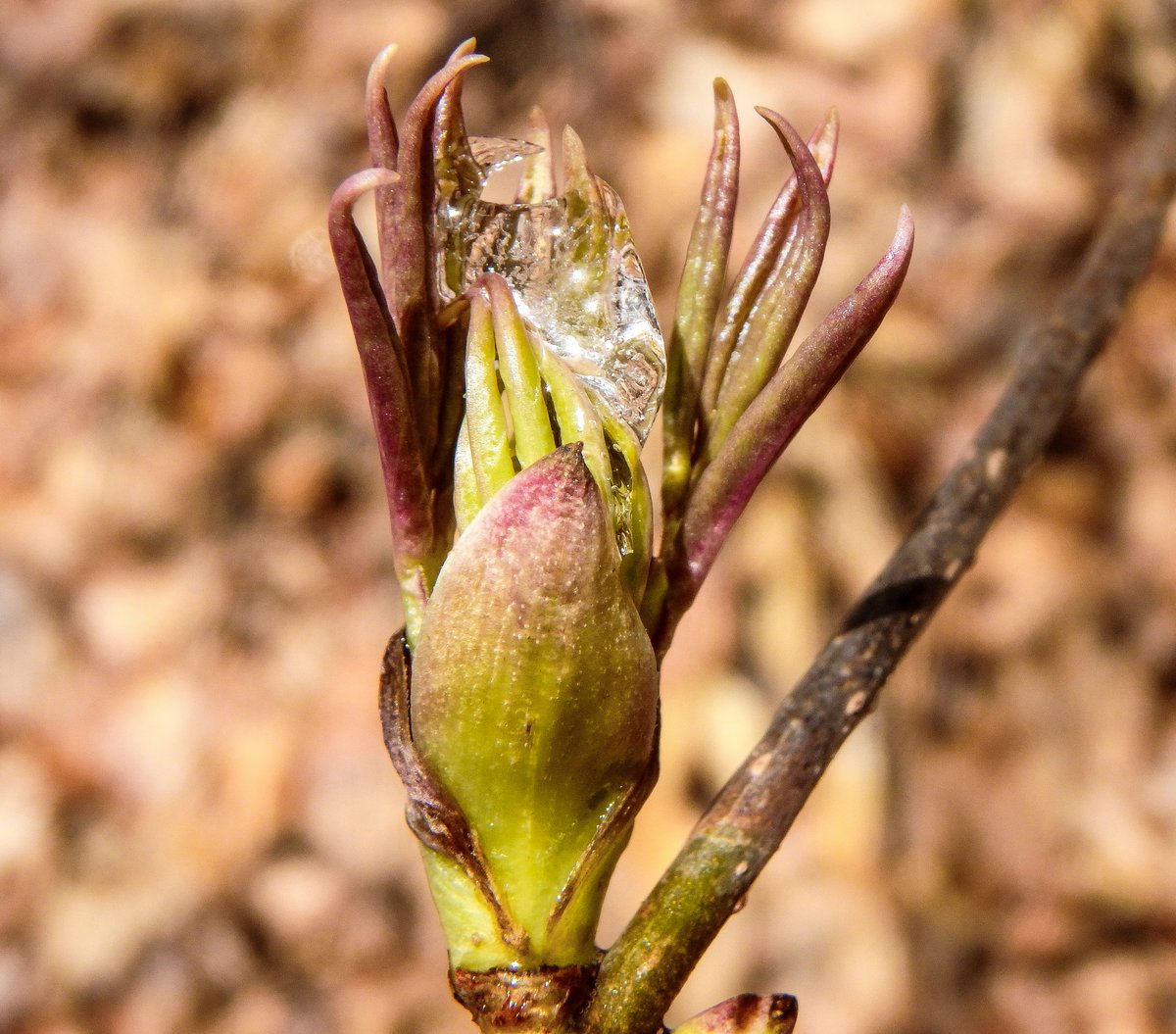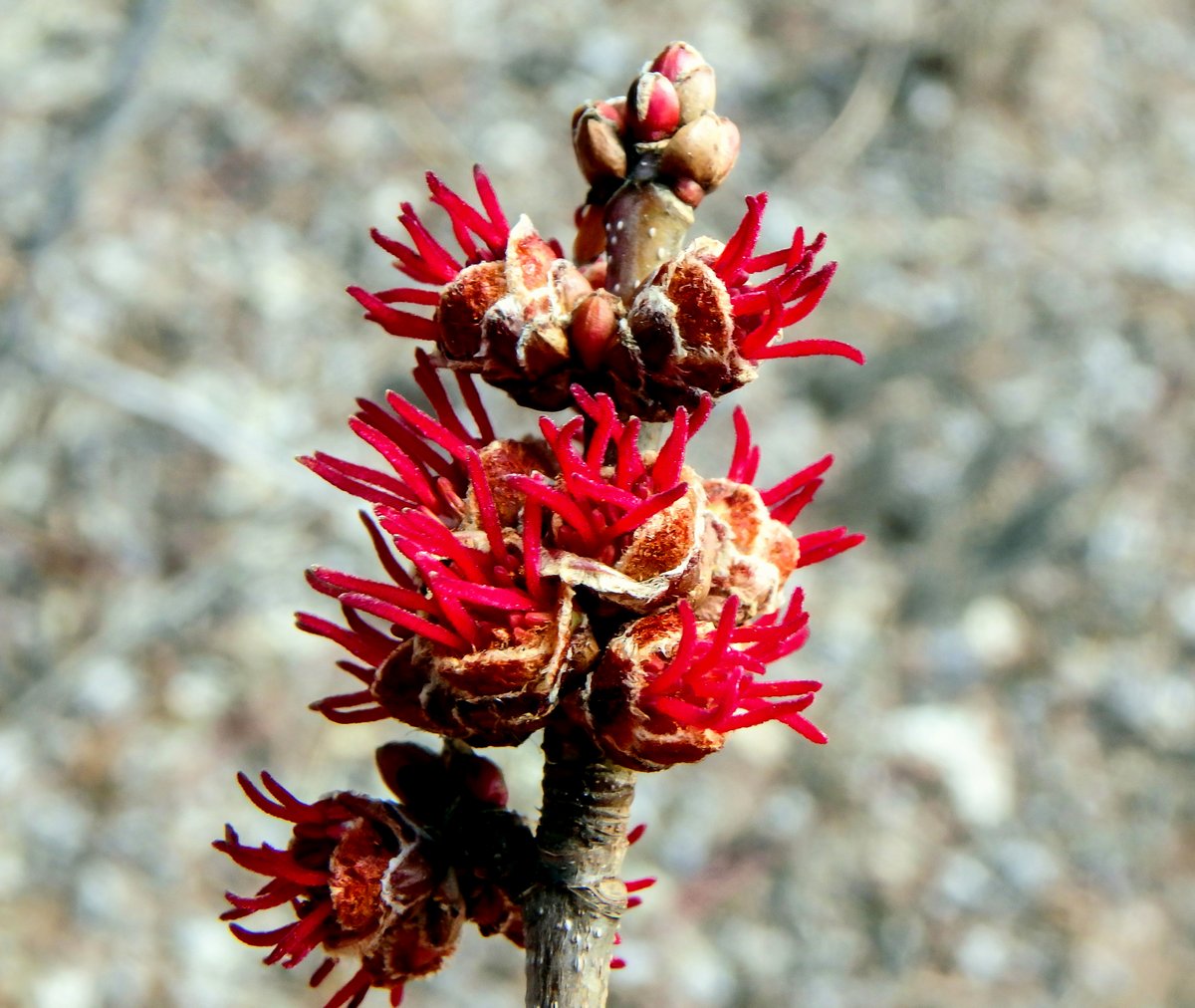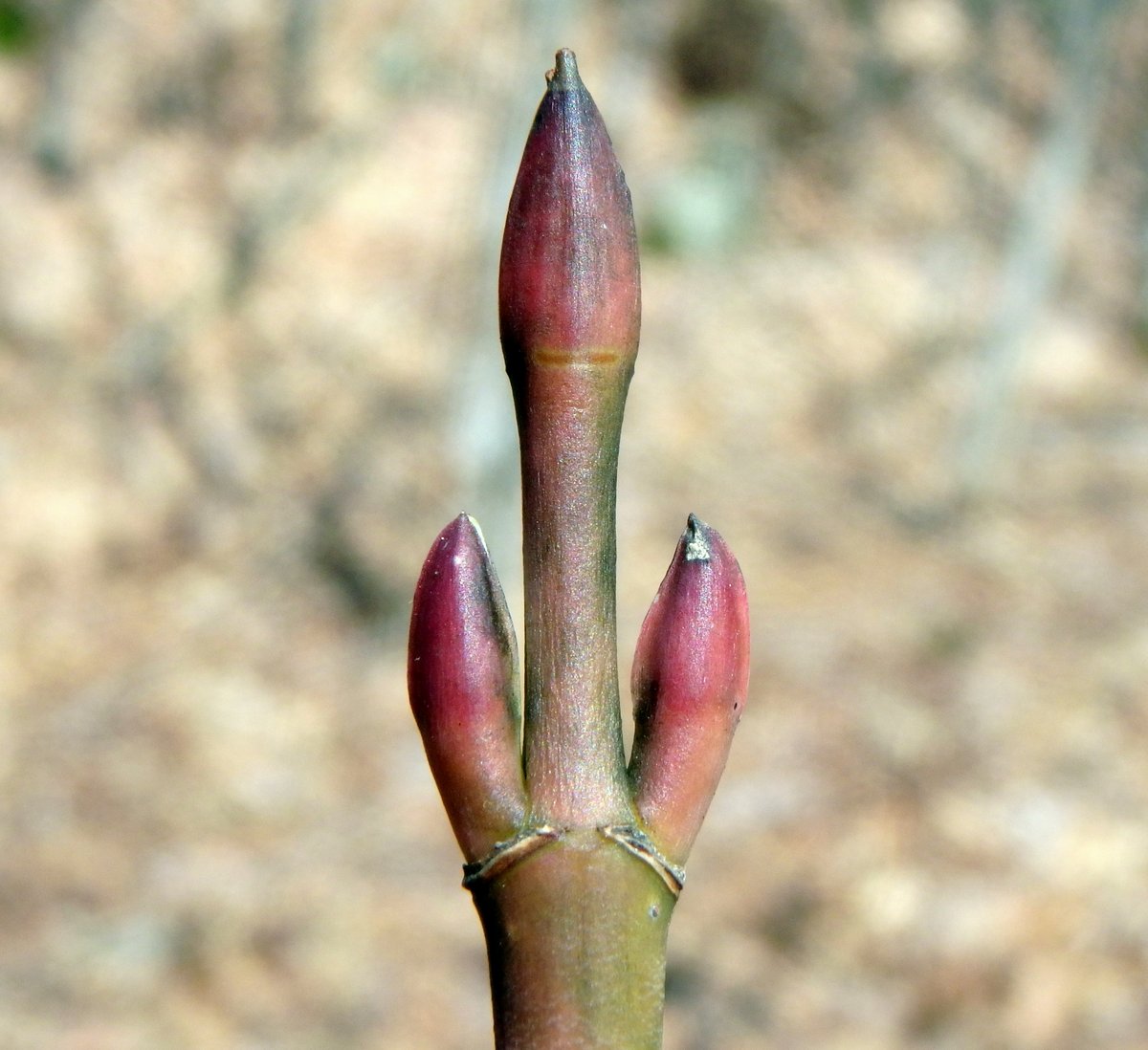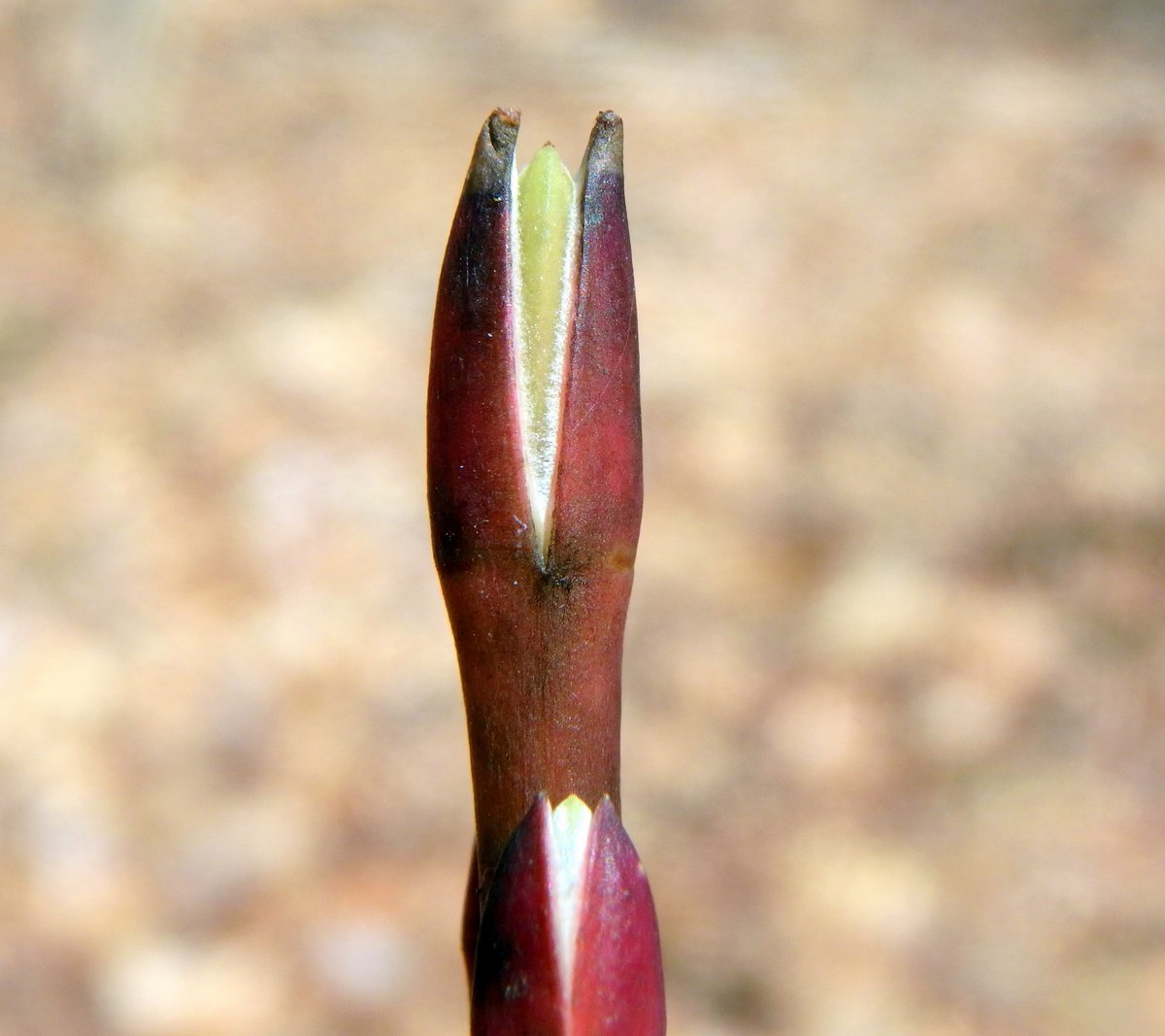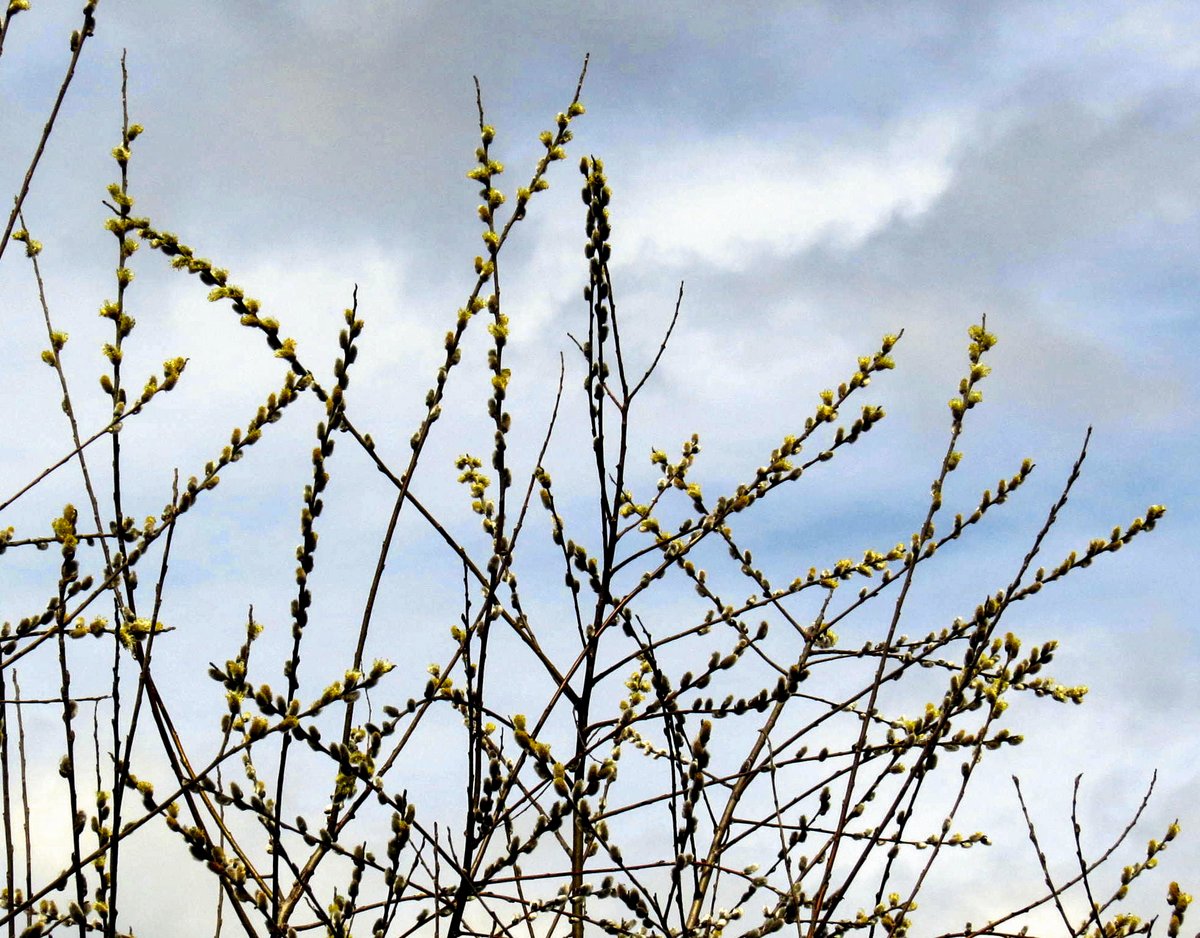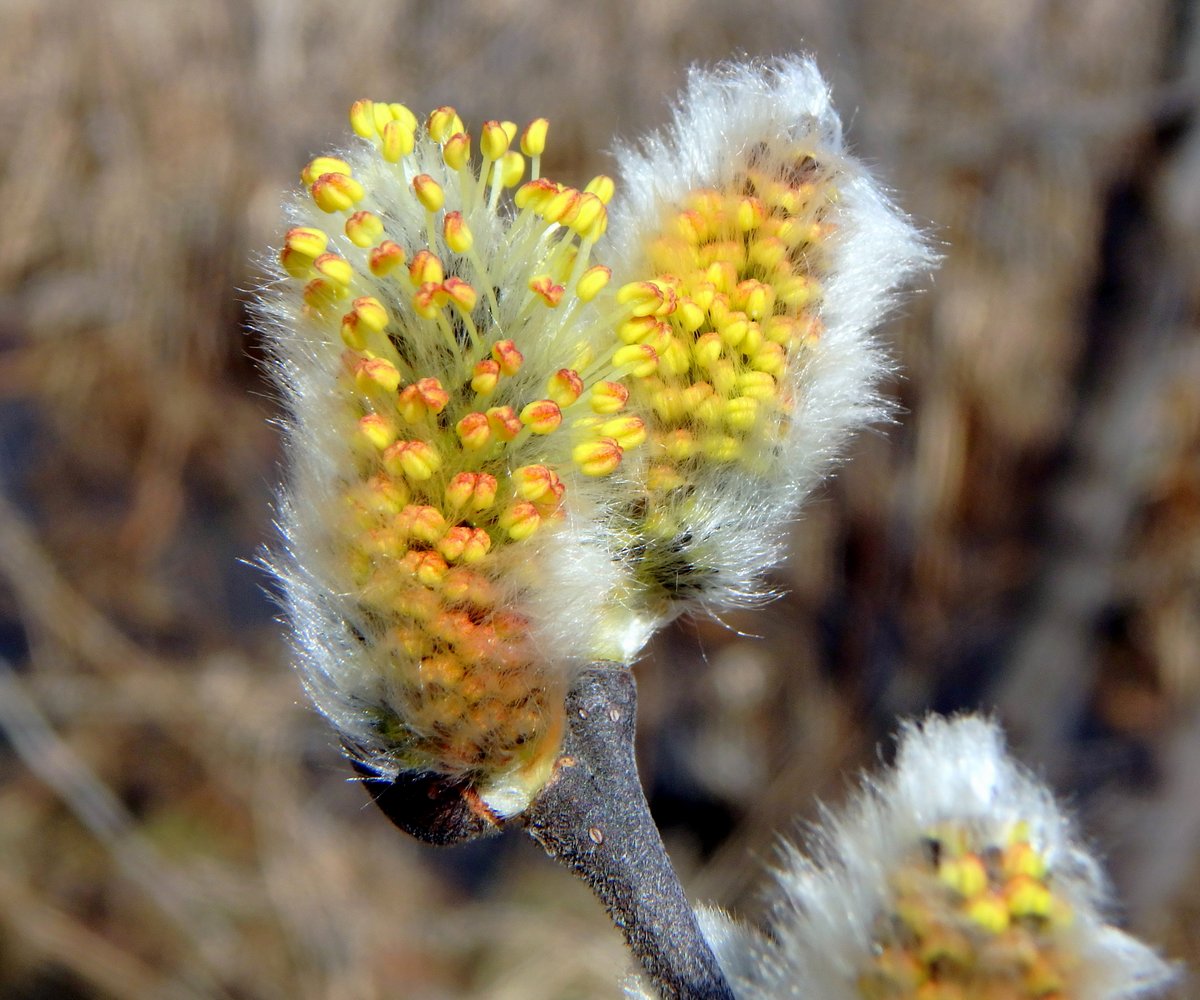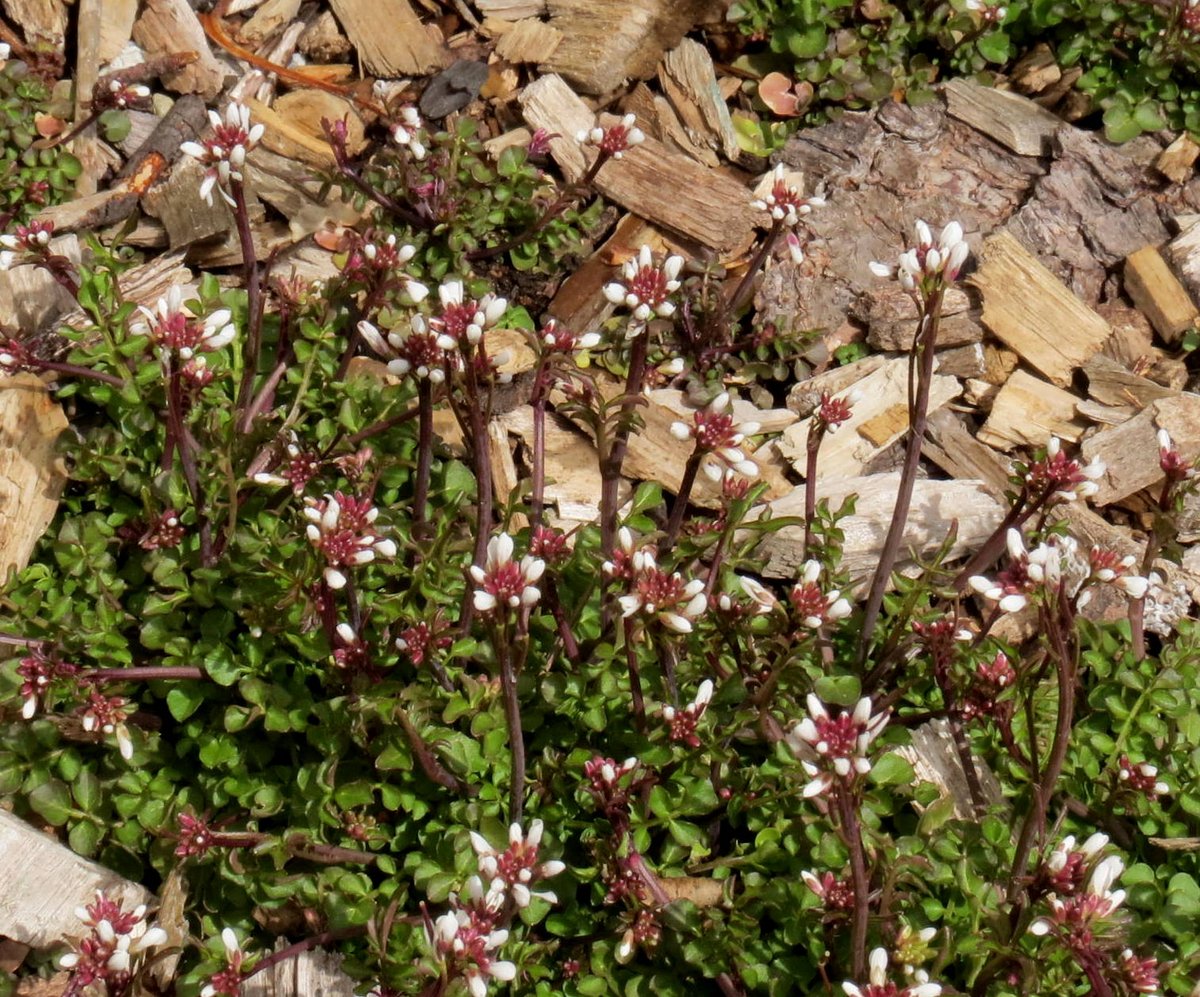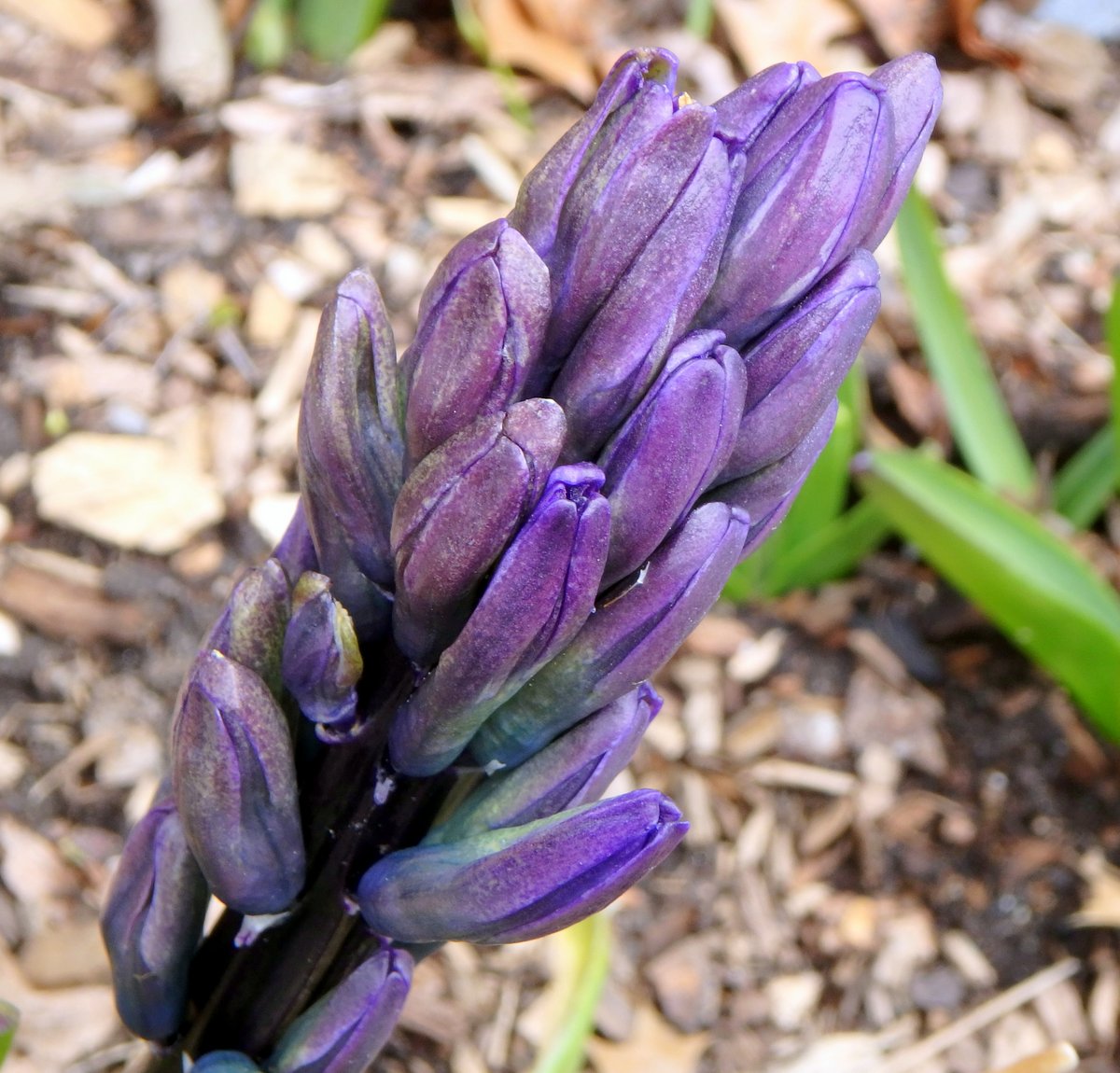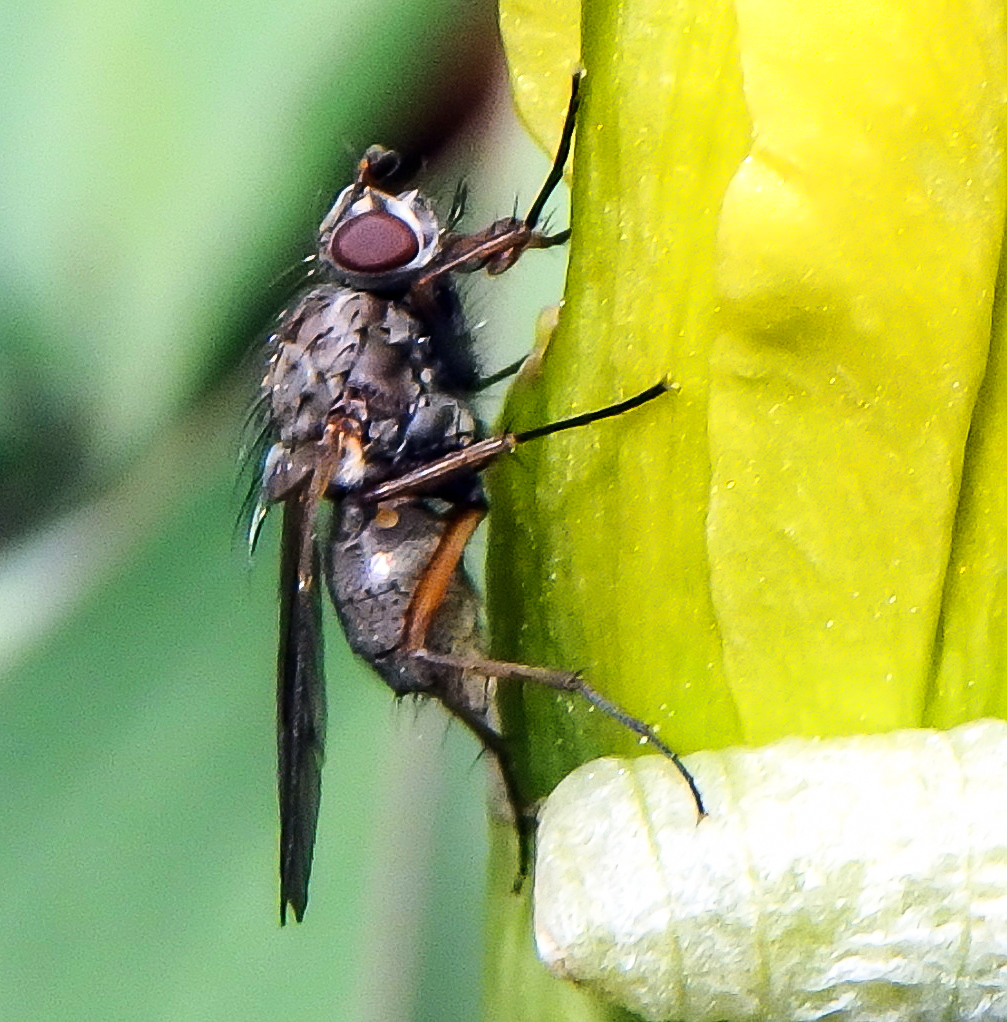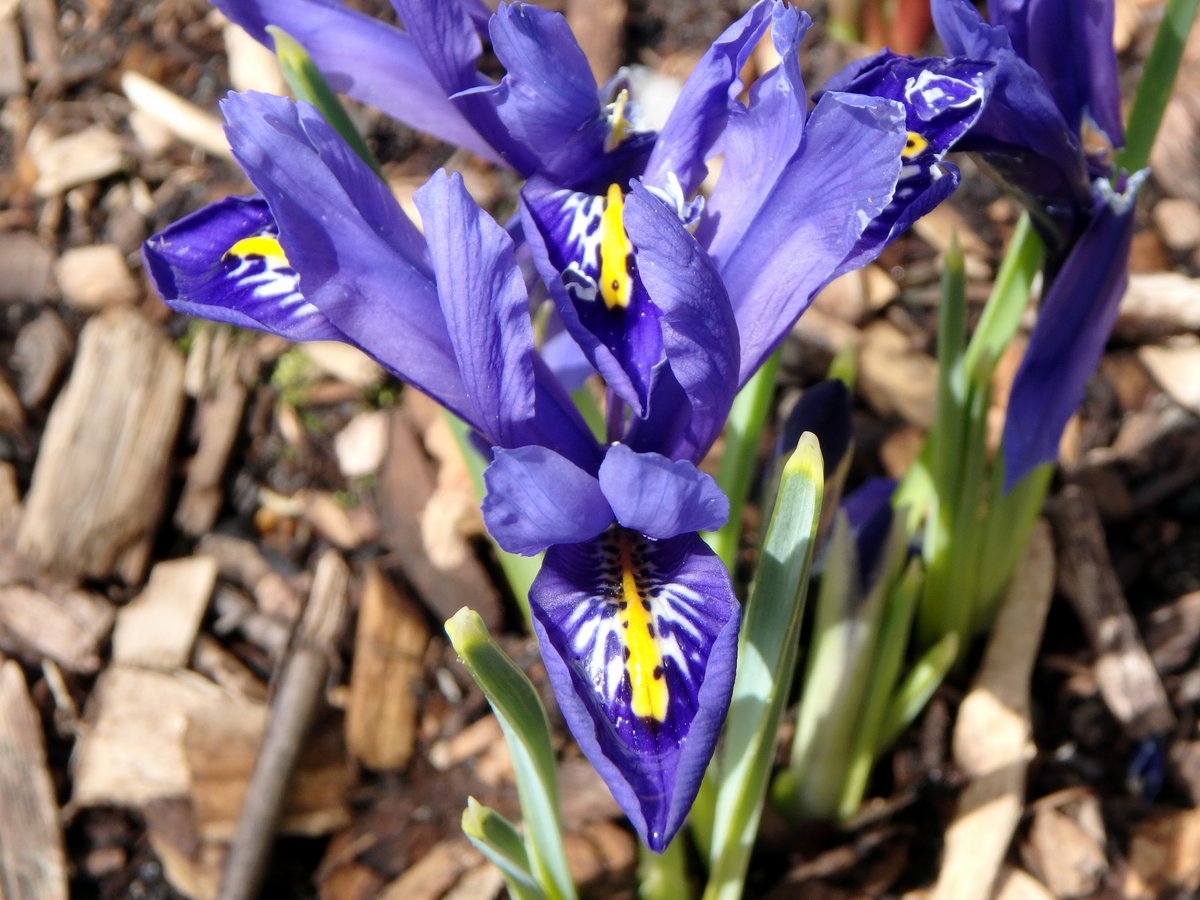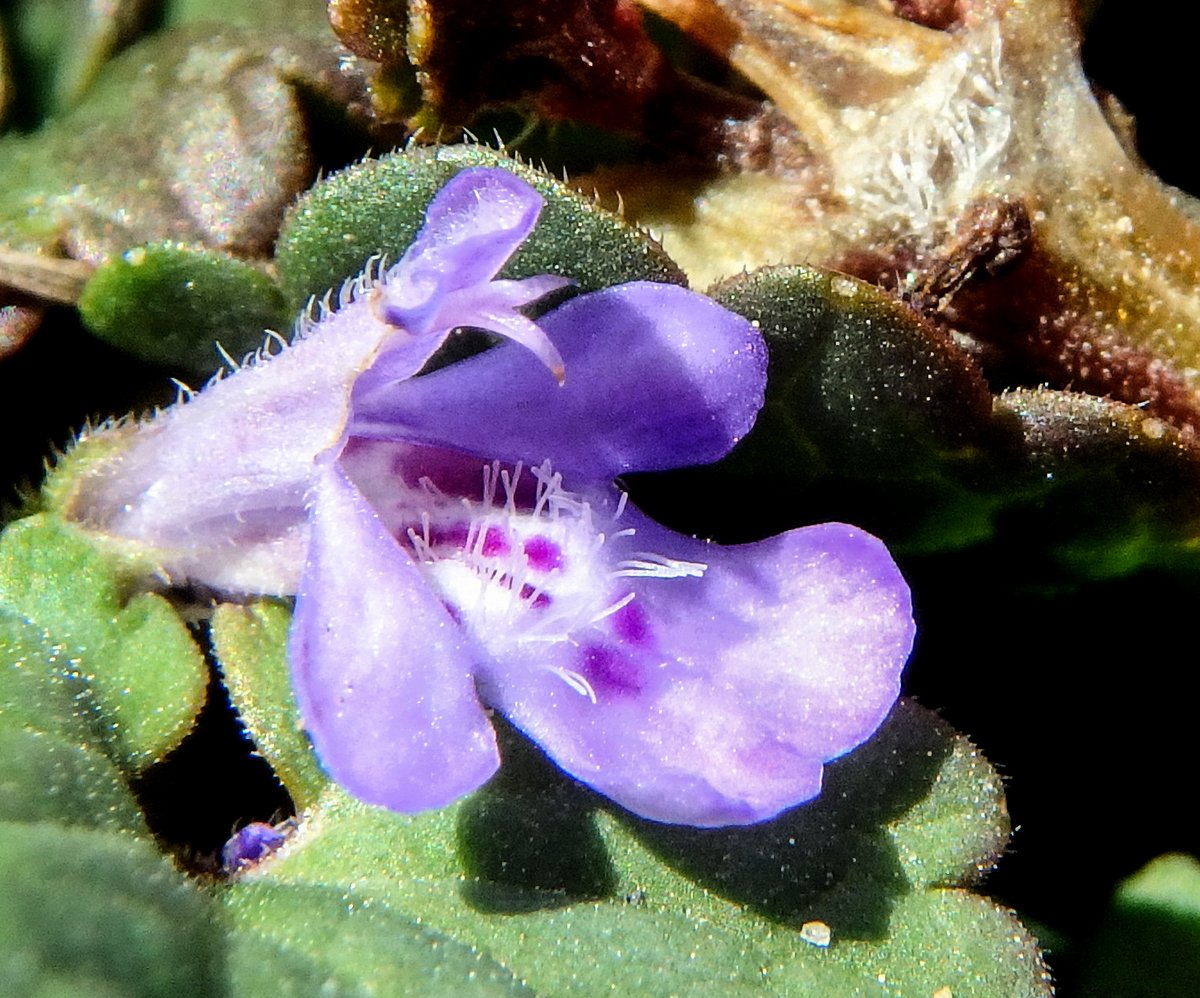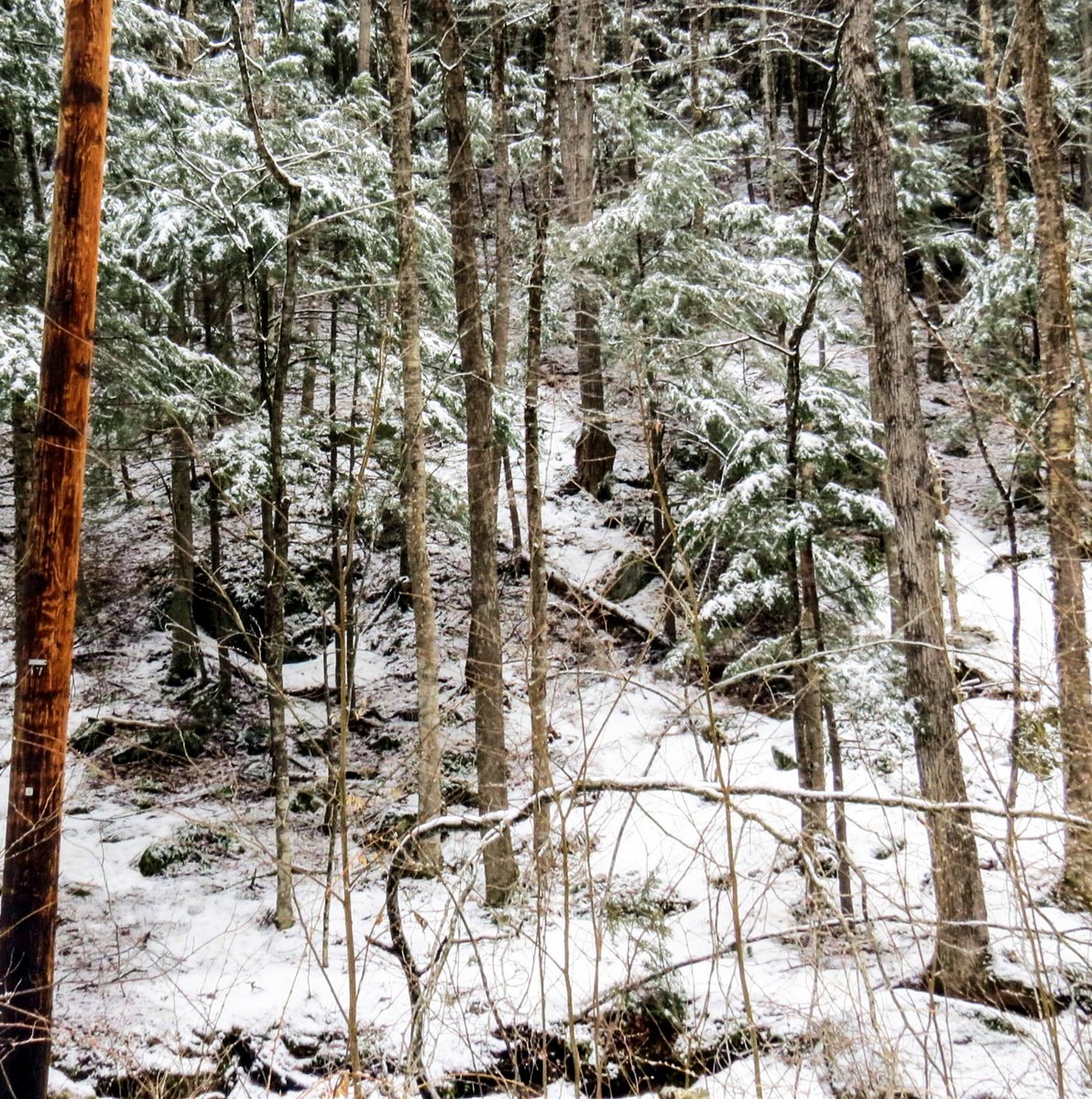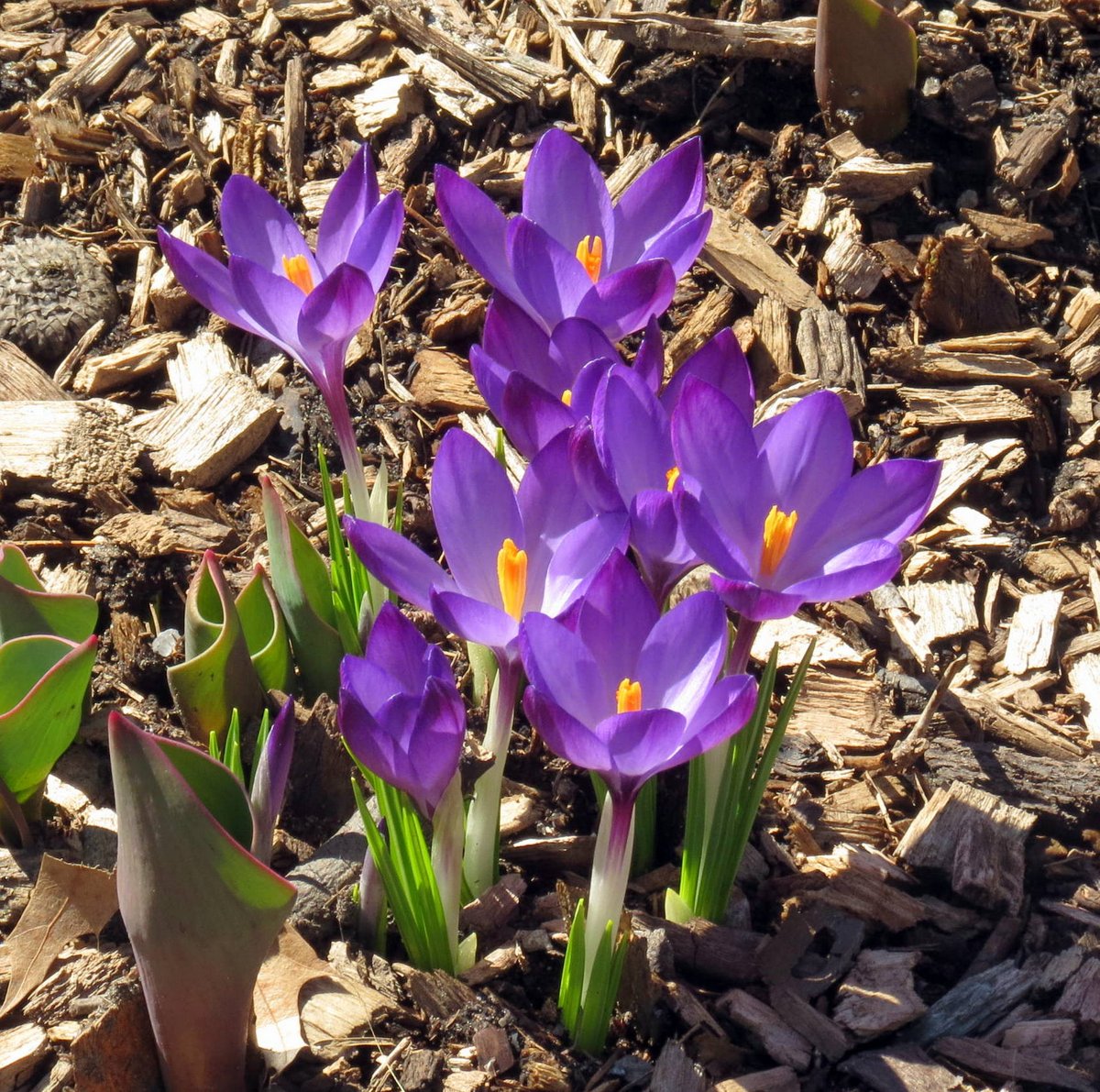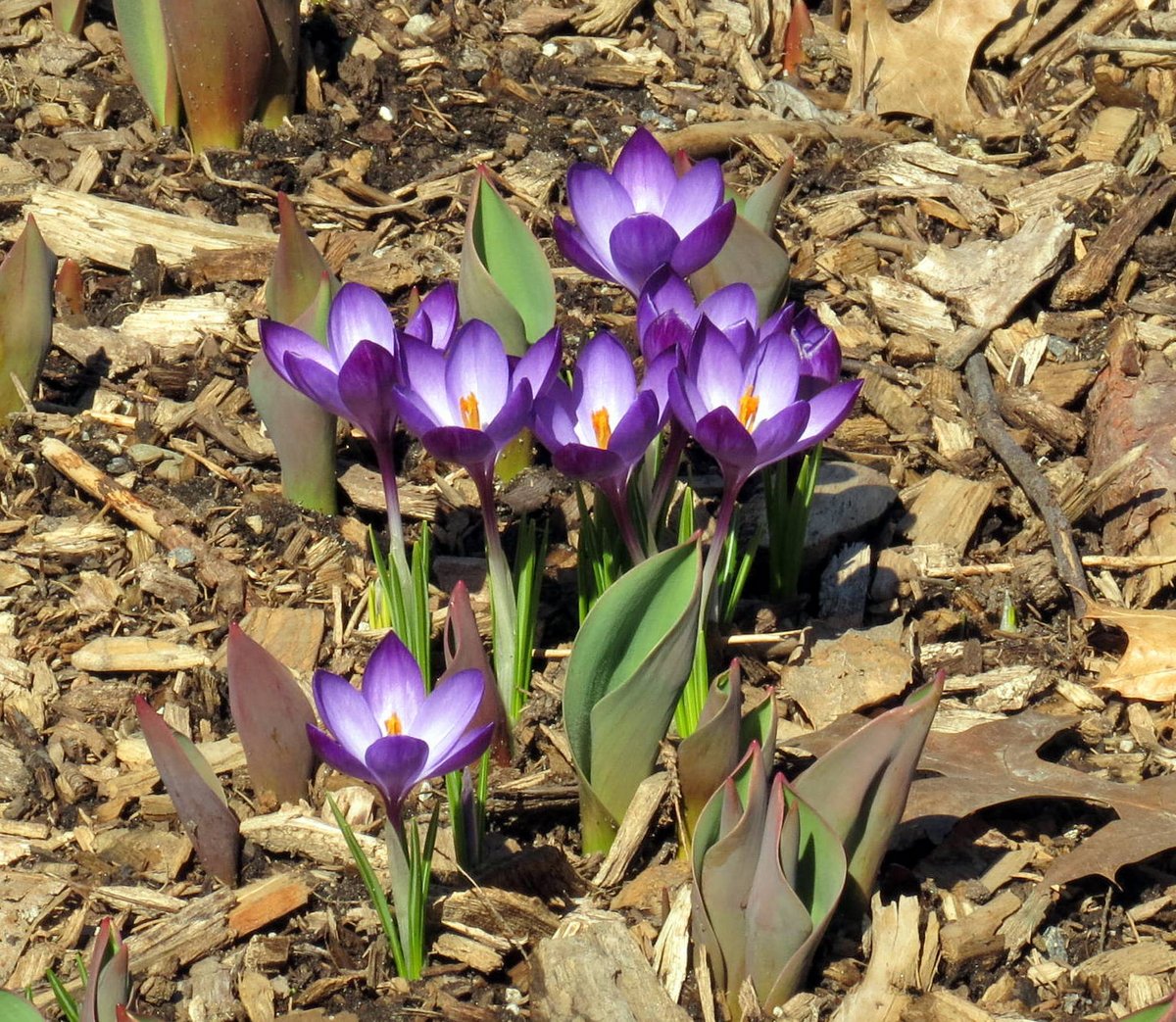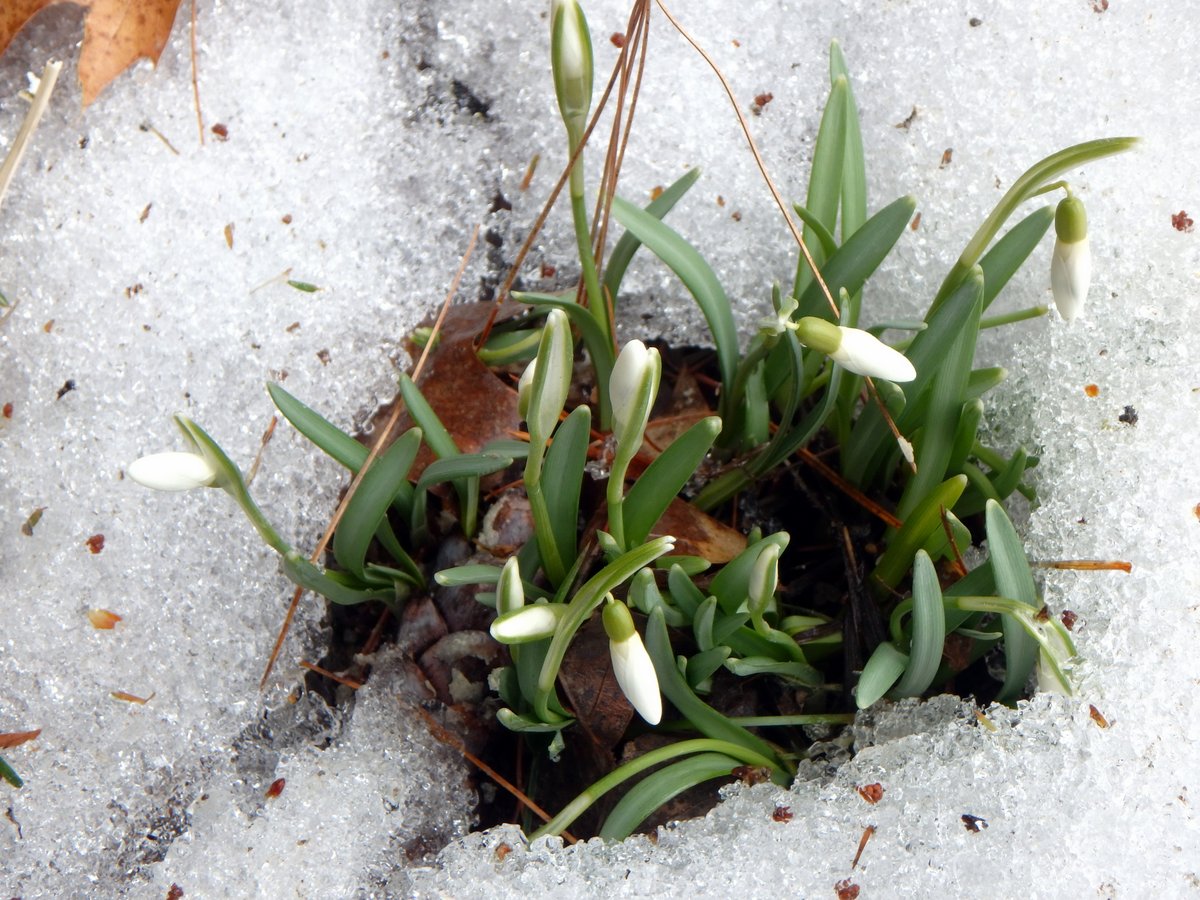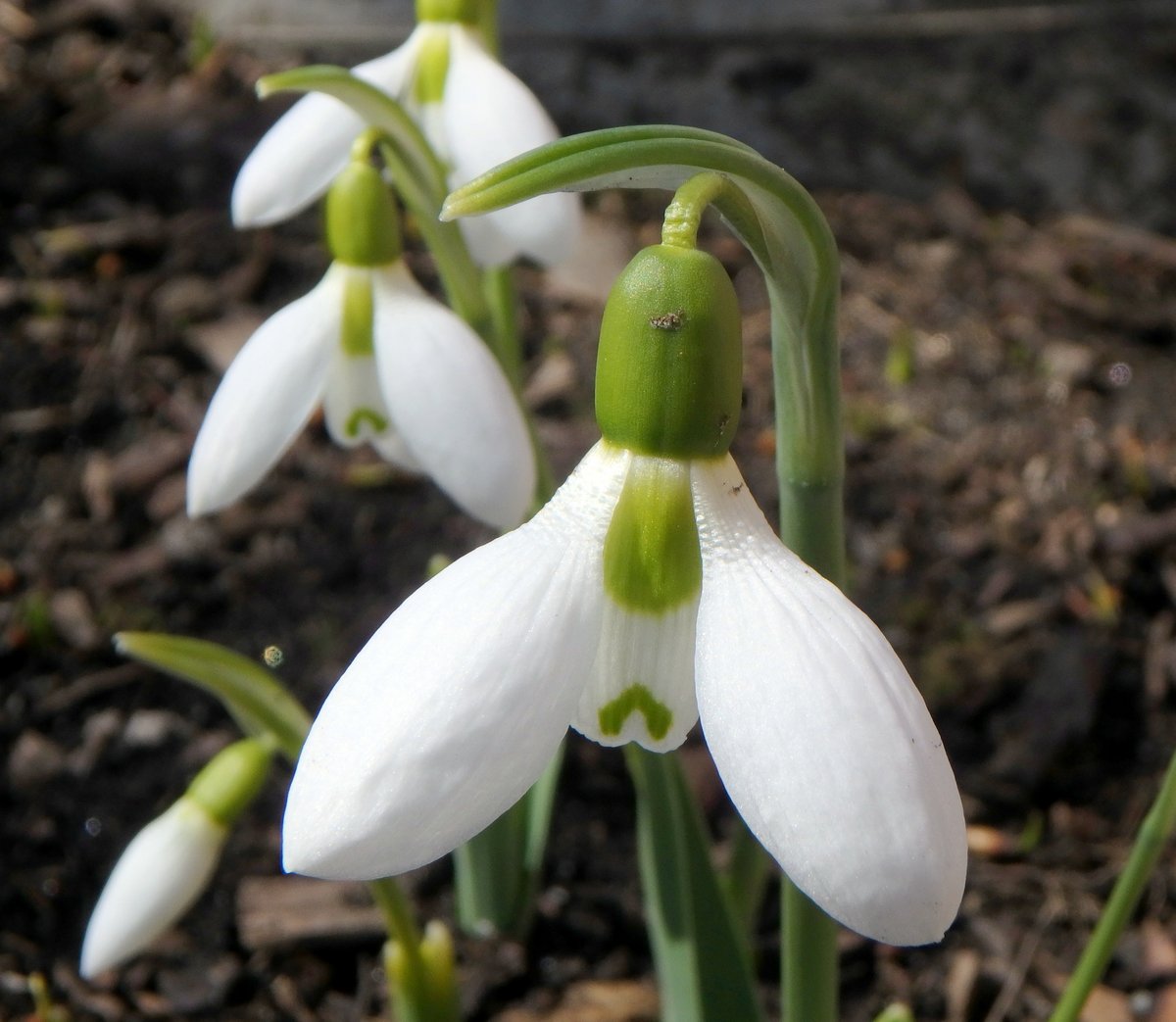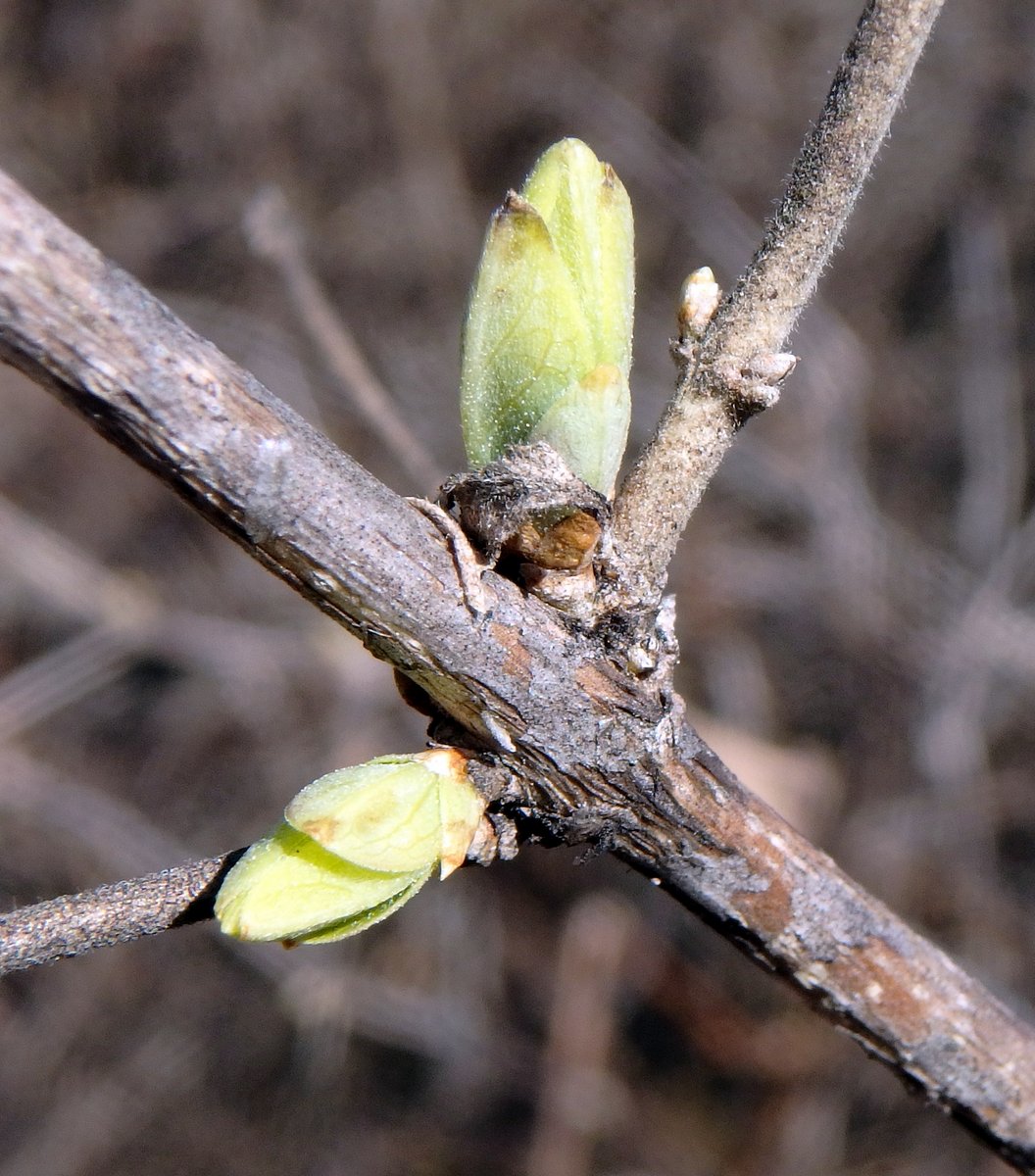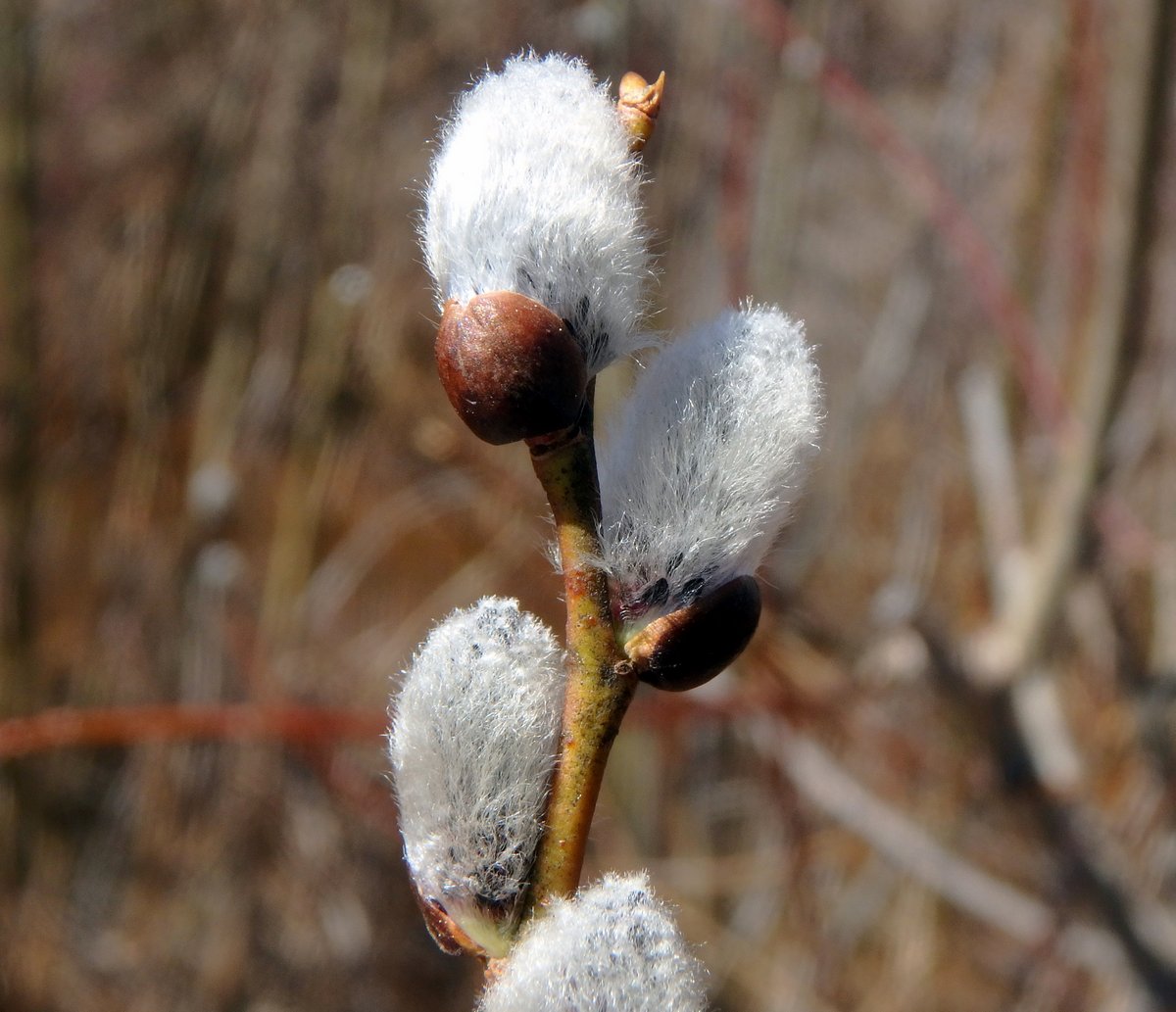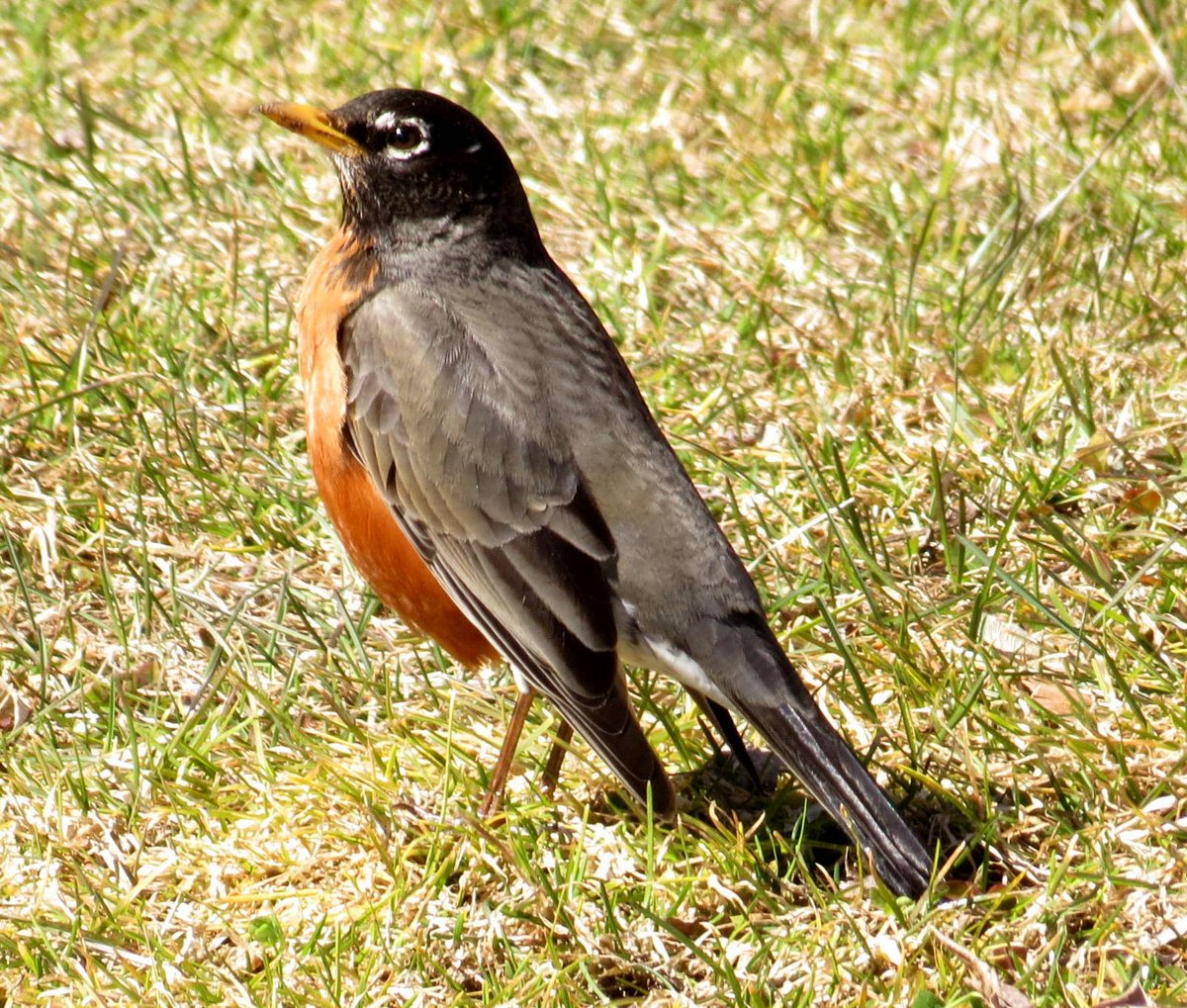
We’ve had a string of very warm days here lately and that was all it took to kick spring into high gear. As you can see in this photo of the buds, red maples are responding to the warmth and buds are breaking. You can just see the male stamens all tucked inside the now open buds.

And then on another branch of the same tree the male flowers had fully opened and were producing pollen. I looked at several different red maples on this day, but this was the only one I saw flowering. Tree blossoming periods are staggered over several weeks, so if frost damages some flowers it won’t damage them all. That’s a good thing because this tree has misjudged the weather and jumped the gun. The night time forecasts include below freezing temperatures this week, so there is a good chance that any open flowers on this tree will die. However, thanks to the staggered bloom times that nature has seen to, I might still find red maples flowering a month from now.

I checked hundreds of hazelnut buds but hadn’t seen any of the tiny scarlet, female thread like flowers. They would appear at the top of a bud much like this one, which is so small I don’t really know how to describe it.

But then I saw this bush, loaded with golden colored male catkins, so I decided to check it for female flowers. Hazelnut catkins are just a string of tiny male flowers that usually spiral around a central stalk, and though these weren’t open and producing pollen yet the fact that they have readied themselves to do so is enough to awaken the female flowers.

And there they were, just barely opened on the first day of spring. If the wind blows just right and they are pollinated these almost microscopic scarlet threads will become hazelnuts, which will hopefully ripen by next fall.

There was a time, when I was gardening professionally, that I dreaded seeing dandelions starting to bloom, but I can’t tell you how happy I was to see this, the first dandelion I’ve seen this year.

I suppose my outlook must have changed. All the prejudices that I had toward them began to slip away and I started seeing dandelions for what they really are, which is a beautiful yellow flower that shouts spring is here! When I stopped fighting them and just let them be, I saw the beauty that had always been there. It was only my thoughts about them that had kept their beauty hidden. As Marcus Aurelius said “If you are pained by external things, it is not they that disturb you, but your own judgement of them. And it is in your power to wipe out that judgement now.” Though I didn’t consciously “wipe out my judgement” of dandelions I have certainly softened my attitude toward them over the years. My dislike (that was mostly learned from others who didn’t like them) has completely fallen away, and maybe that is as it should be. All of my life they have been here. I have eaten their leaves and drank the coffee I made from their roots and dusted the tip of my nose with their pollen, and they are old friends.

I’ve spent a few years trying to figure out what the name of this plant is. I know it is in the mustard family and I know it’s a cress, but I’m not sure which one so I’ll just call it a spring cress. I think it might actually be hairy bittercress but by most accounts it’s a hated weed that is almost impossible to eradicate because of the huge numbers of seeds it produces. You can pull plants until the cows come home but you’ll always miss one or two. It’s like sea turtles; most will get eaten by birds or fish but there will always be some that survive to carry on the Prime Directive, which is continuation of the species. Nature has taken care of it.

Can you see the beauty in this “horrible weed?” Its leaves were just unfolding when I got there, which I thought made it even prettier.

If I go all the way back as far as my memory will go, I find the flowers of ground ivy (Glechoma hederacea) living there. Both houses I spent my time at when I was young, my father’s and grandmother’s, had plenty of ground ivy in the lawns and I used to love seeing them bloom so early in spring. Ground ivy is in the mint family and is related to henbit. It has a powerful and unusual odor when it is mowed, with the kind of smell that gets in the back of your throat and stays there for a while.
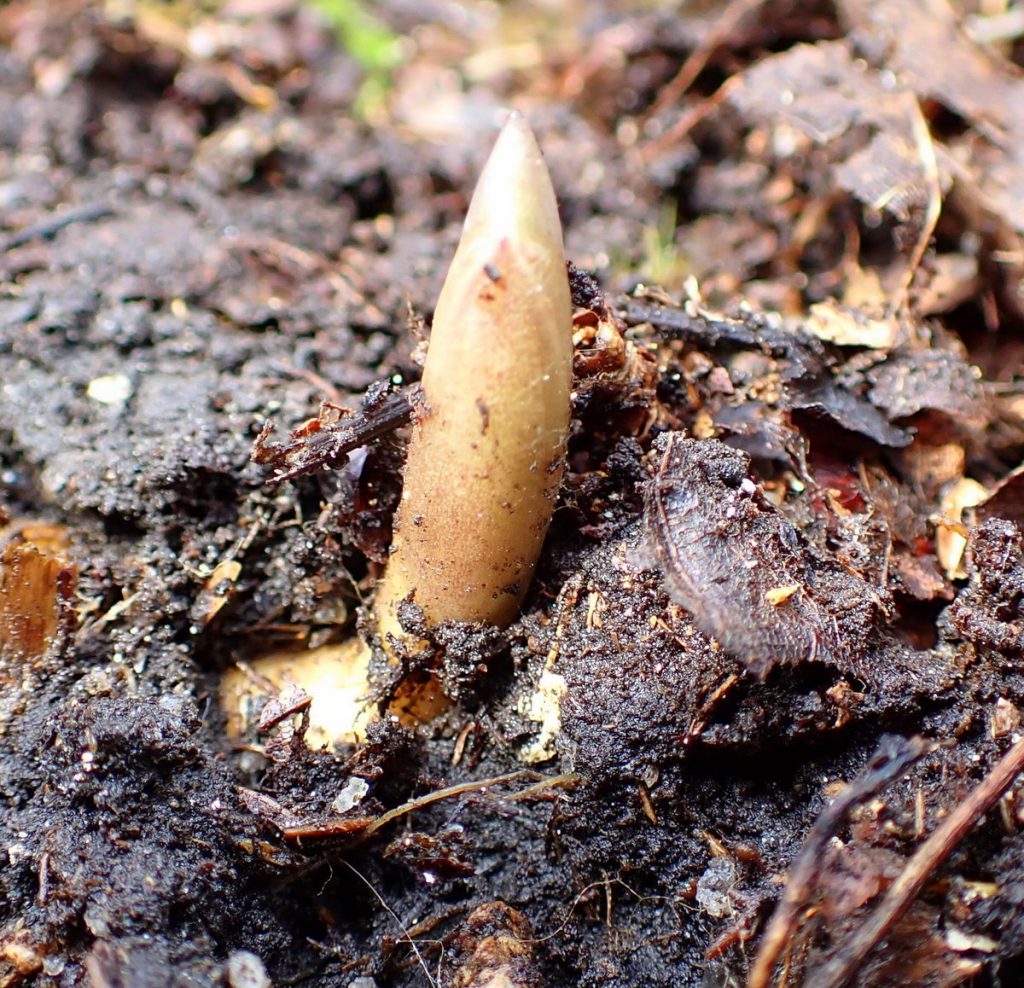
I brushed some leaves aside where I know Solomon’s seal plants grow and there were the spring shoots. After I took this photo, I covered them up again and let them be. They’re beautiful just as their first leaves start to unfurl, so I’ll try to be there at the end of April to see it happening.

Even after temperatures in the 60s and 70s F. willows still aren’t showing any signs of their yellow flowers. They know what they’re doing and they bloom when they’re ready but I have seen bees and other insects flying already, and they would love to forage on some willow pollen, I’m sure.
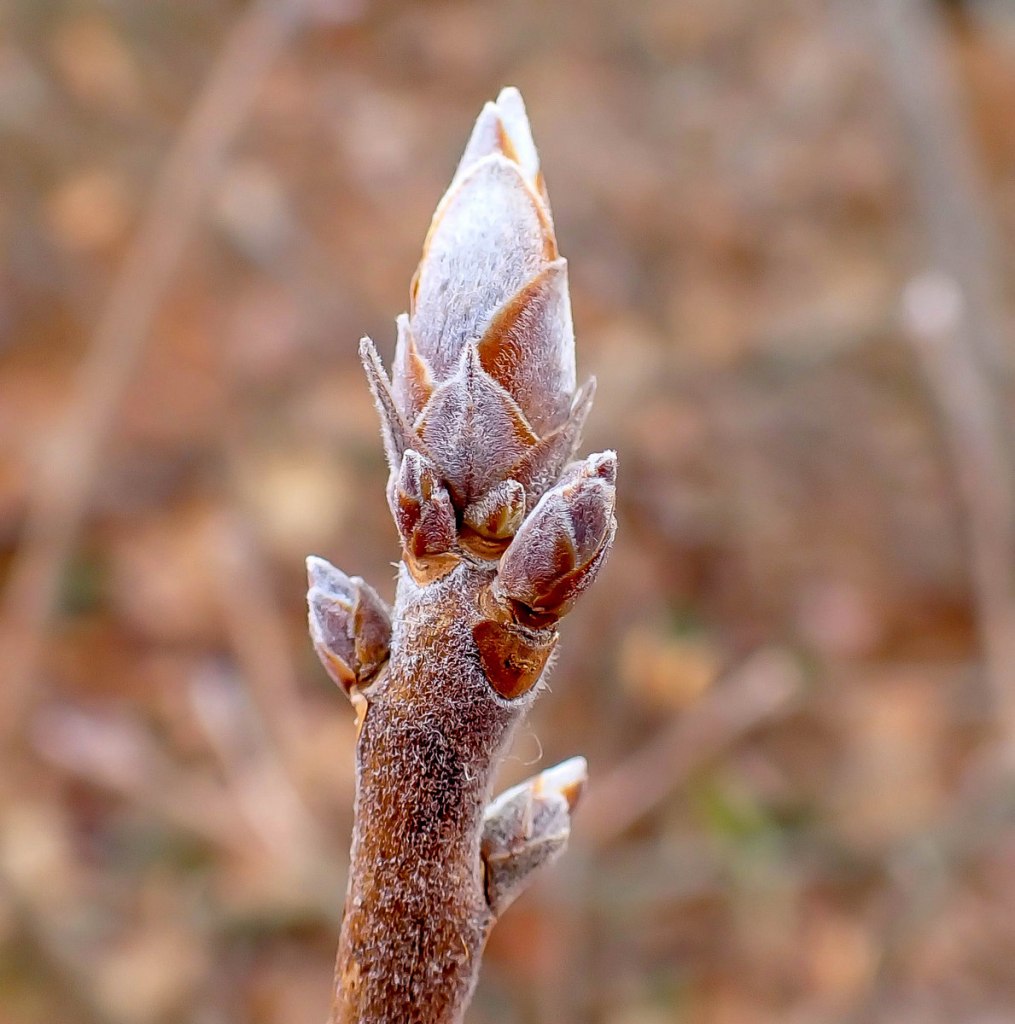
I looked at the buds of a native pink azalea (Rhododendron periclymenoides) and though the bud scales looked like they had relaxed I’m not sure any actual swelling had begun. They bloom in June so there is time. As can be seen in this photo this is a very hairy plant, and it is the hairs on the outside of the flowers that exude the wonderful scent.

Looking for the seedpods of a wild azalea is a good way to find them. They’re quite large and showy.

Snowdrops bloomed while there was still a bit of snow left near them. Maybe that’s how they came by their name.
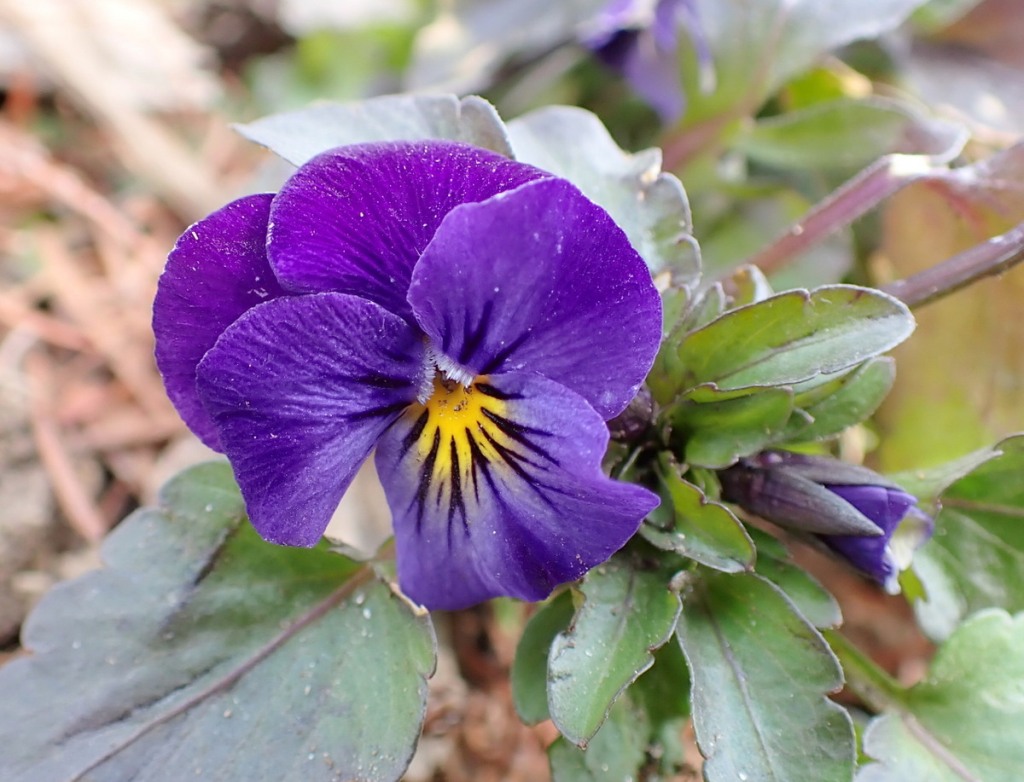
Johnny jump ups have lifted their heads up and are blooming far better now than they were just a week ago. The warm weather and rapidly melting snow have given everything a boost and plants now seem anxious to get going.

I saw a crocus, then two, and then just a day or two later they were everywhere. It’s remarkable what a couple of warm days will do for flowers in springtime. It was all very sudden; it seemed like most of the flowers in this post had appeared overnight.

I saw some of my old favorites. There were lots of bees buzzing around all the open flowers but they were too skittish for me to get a shot of them.

This one was very dark. Better to show off the yellow stamens and pistil in the center to the bees, maybe. I certainly enjoyed the contrasting colors.

This white one was quite small for a crocus. I’d guess barely an inch across.

All of these crocuses were small. I don’t know if they’re a new kind of hybrid or if they’re just getting smaller with age.

A new witch hazel has come out, or at least it’s new to me, and it’s very pink. I don’t remember ever seeing one with pink petals but I must have because I visit these bushes every spring.

I went to see the skunk cabbages and wow; I saw a lot of them. So many in fact, that I couldn’t move without stepping on the ones still under leaves that I couldn’t see. When you step on a skunk cabbage spathe they squeak, much like a head of cabbage does sometimes when you cut into it, and that’s how I knew I had stepped on them.

Luckily, I only stepped on one or two and didn’t damage them too badly. In any event the spathe isn’t quite as critical as the spadix, which is the pinkish thing that carries the tiny flowers seen here. The spadix is what, through a process called thermogenesis, can raise the temperature of the plant to as much as 70 degrees F. inside the spathe, thereby attracting insects to the tiny flowers, which on this day were already producing pollen. To a cold, hungry insect it is a nice warm cave that serves food. Though this plant’s roots are poisonous and the leaves can cause burning in the mouth Native Americans new how to prepare it, and used skunk cabbage medicinally. I’ve read that they also used the roots as an underarm deodorant, though I’m not sure just how that might have worked. In the 1800s medicine made from the plant was sold as a cure all, most likely by traveling salesman.
Spring in the world! And all things are made new! ~Richard Hovey
Thanks for coming by.
